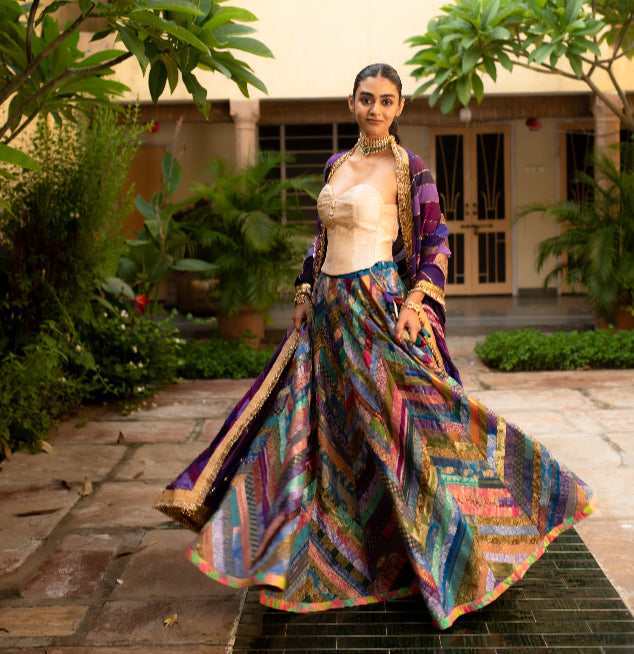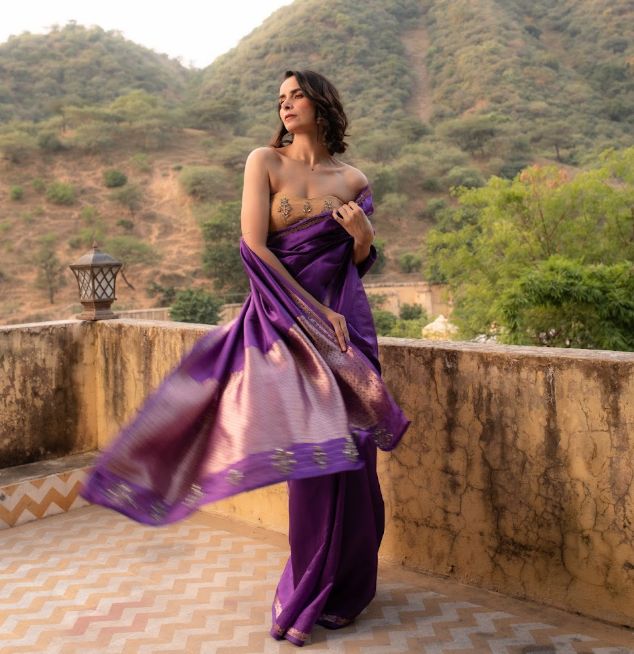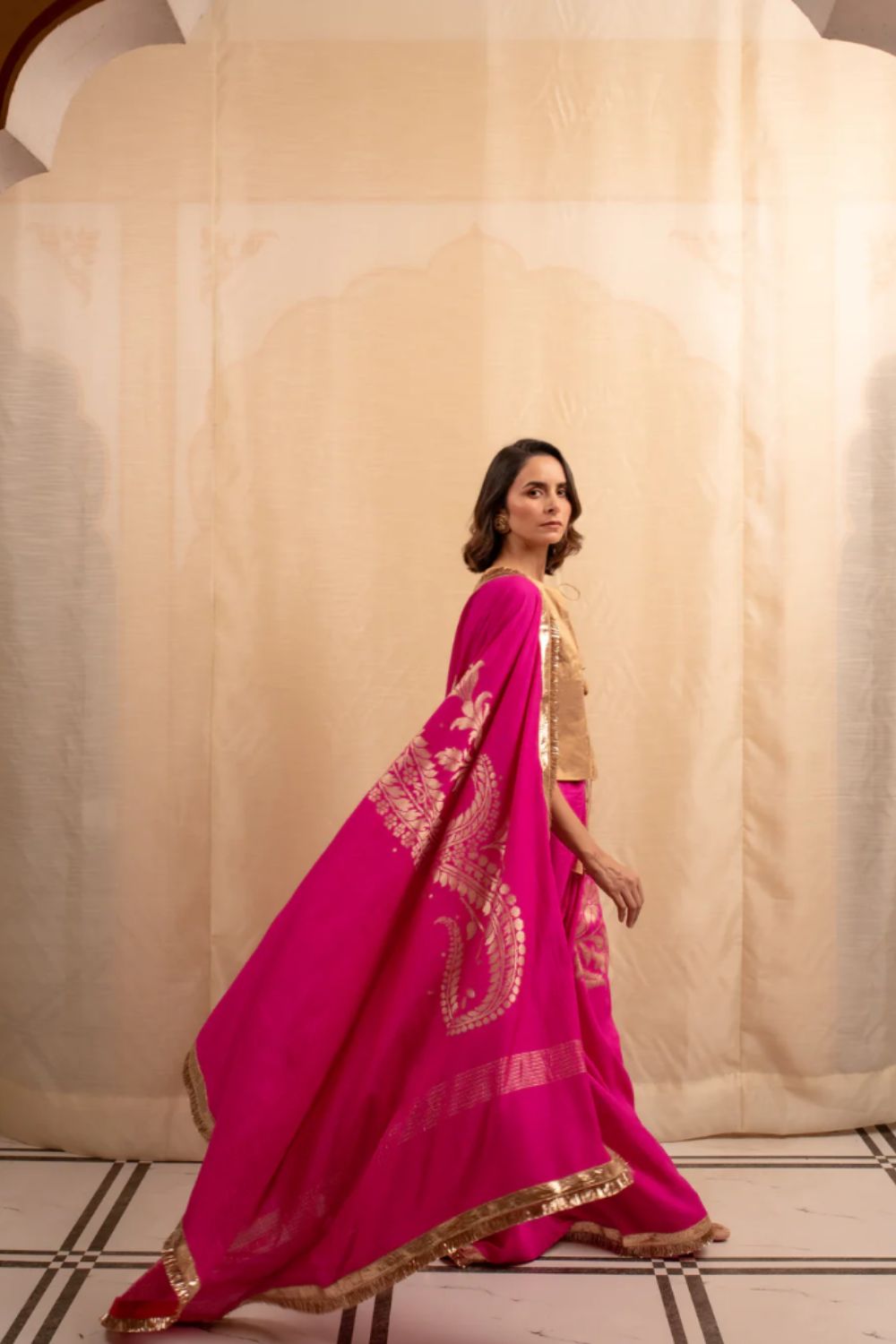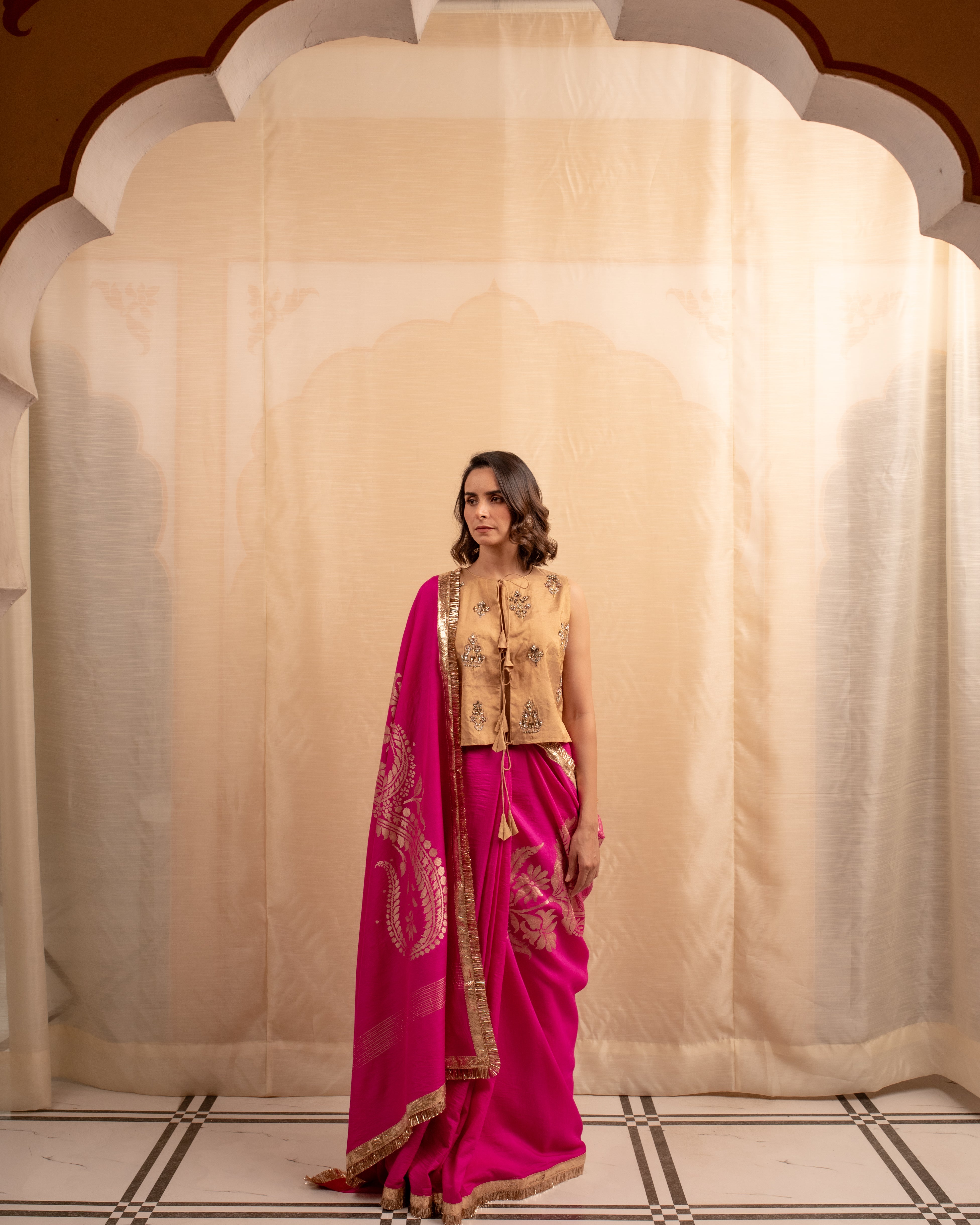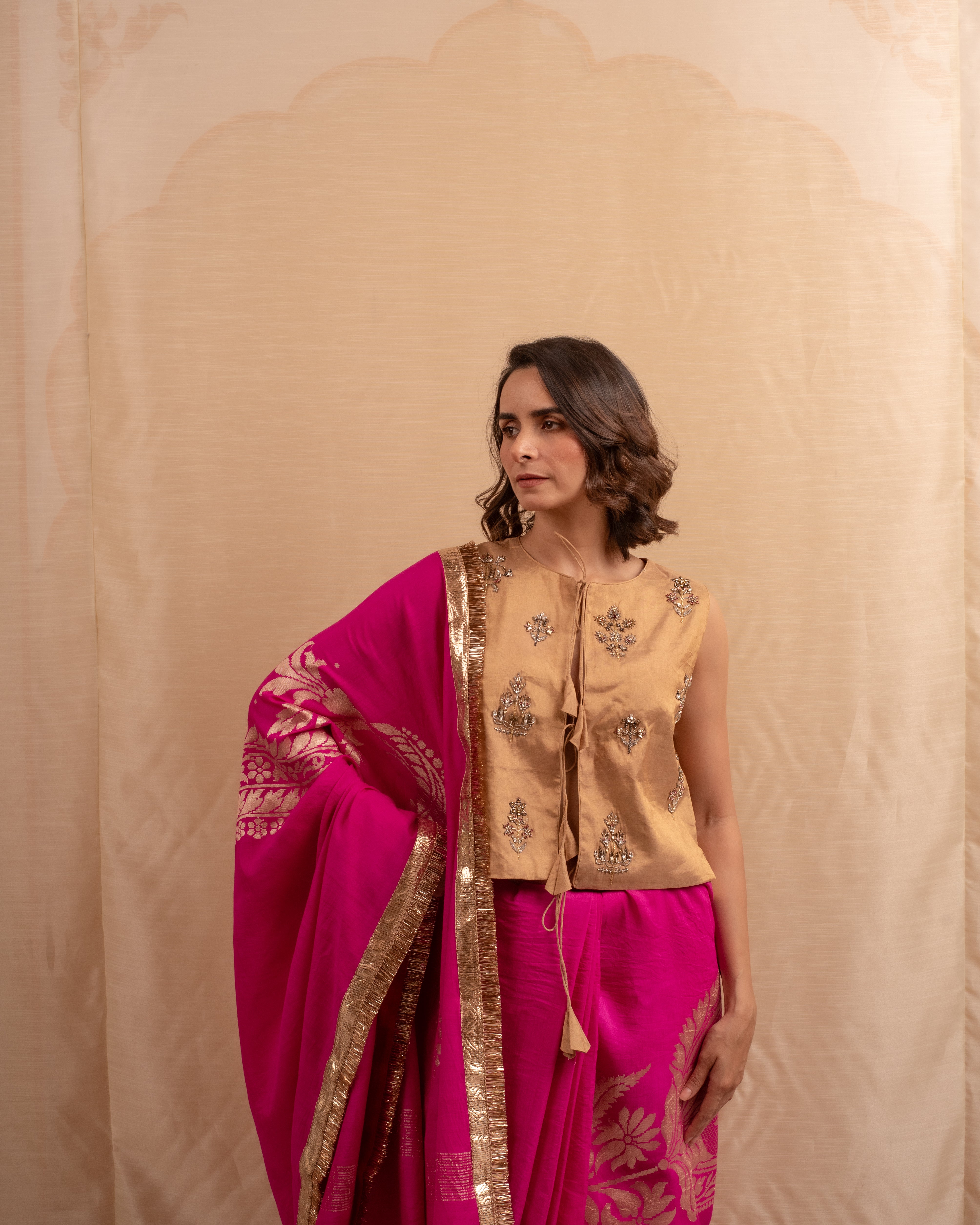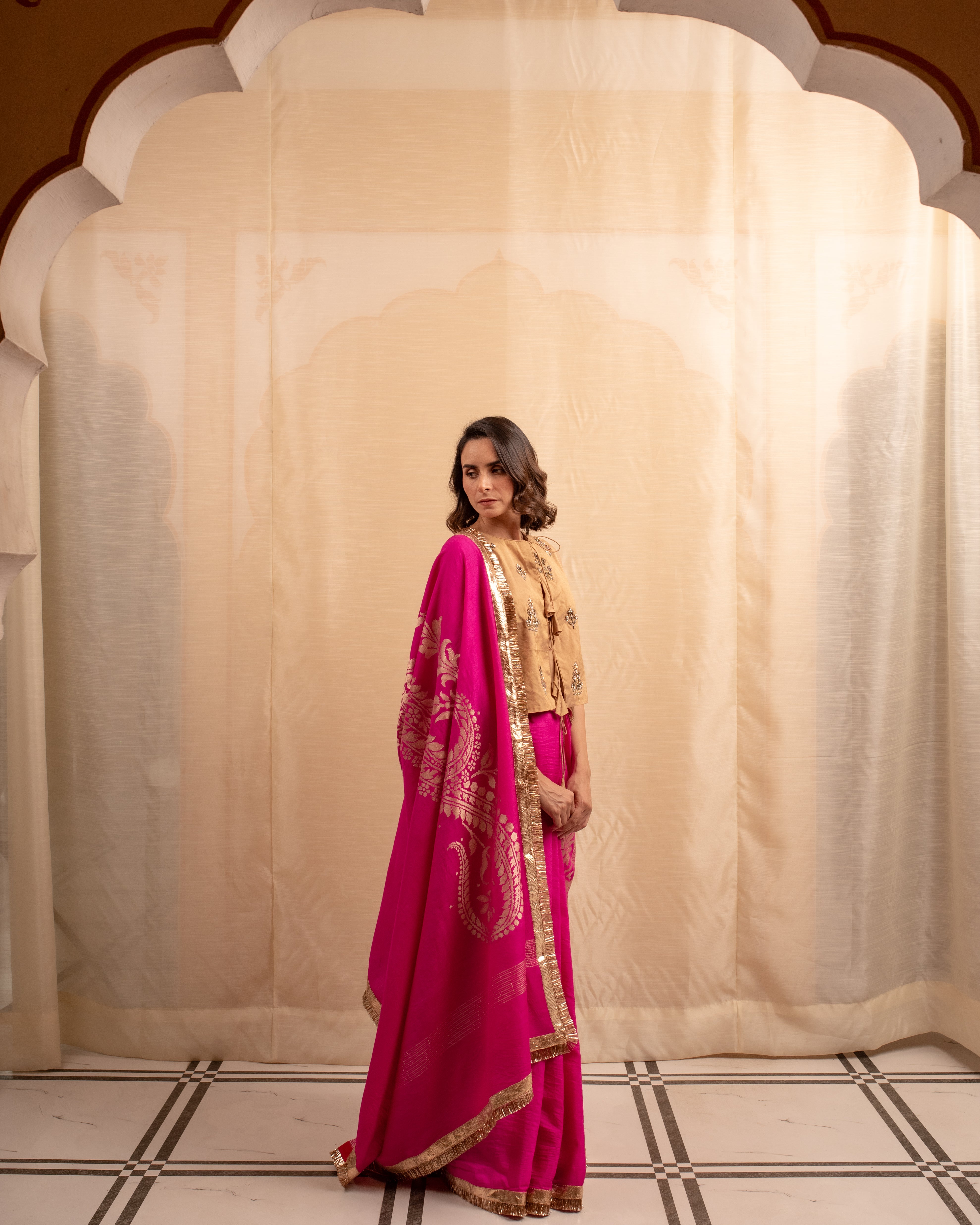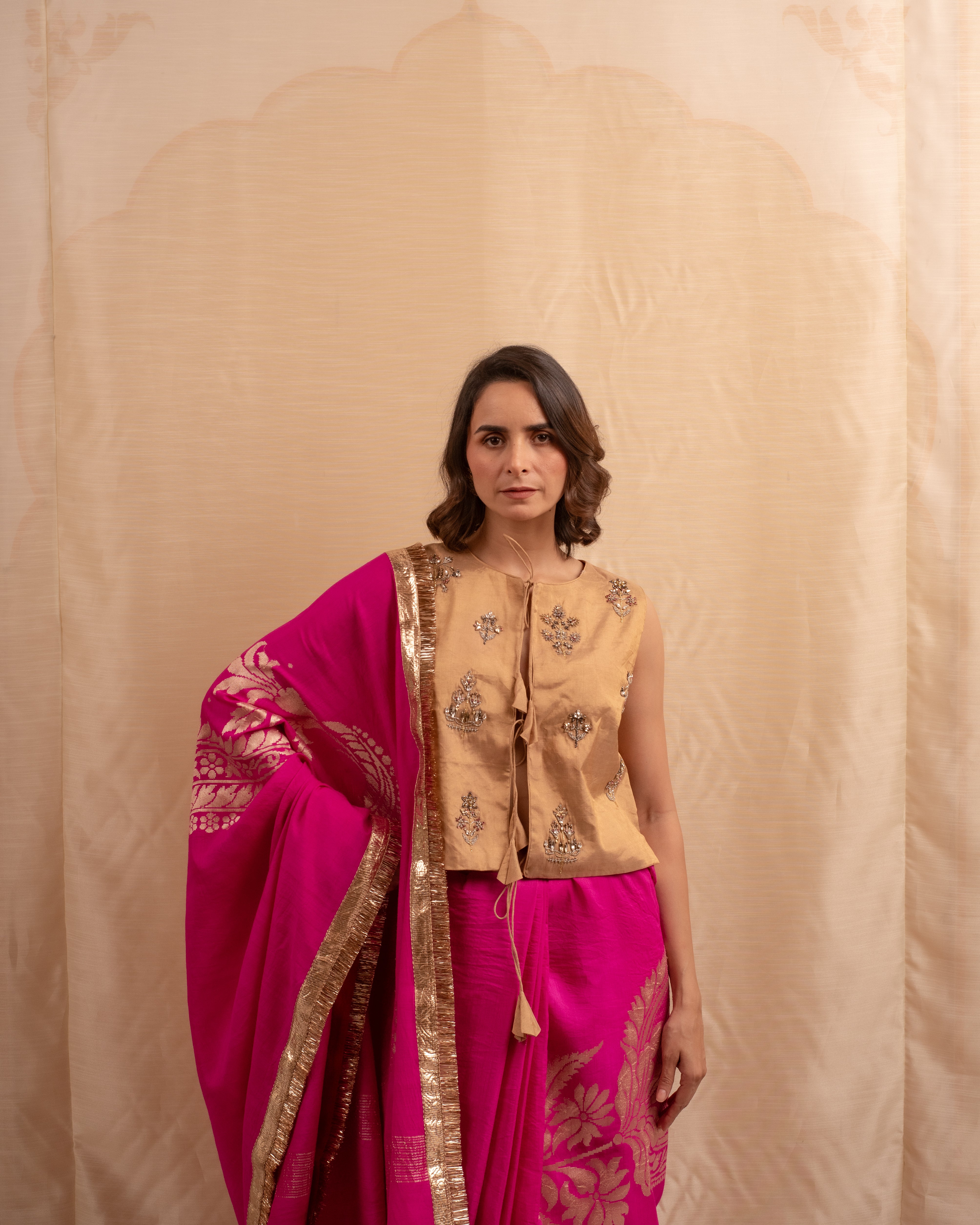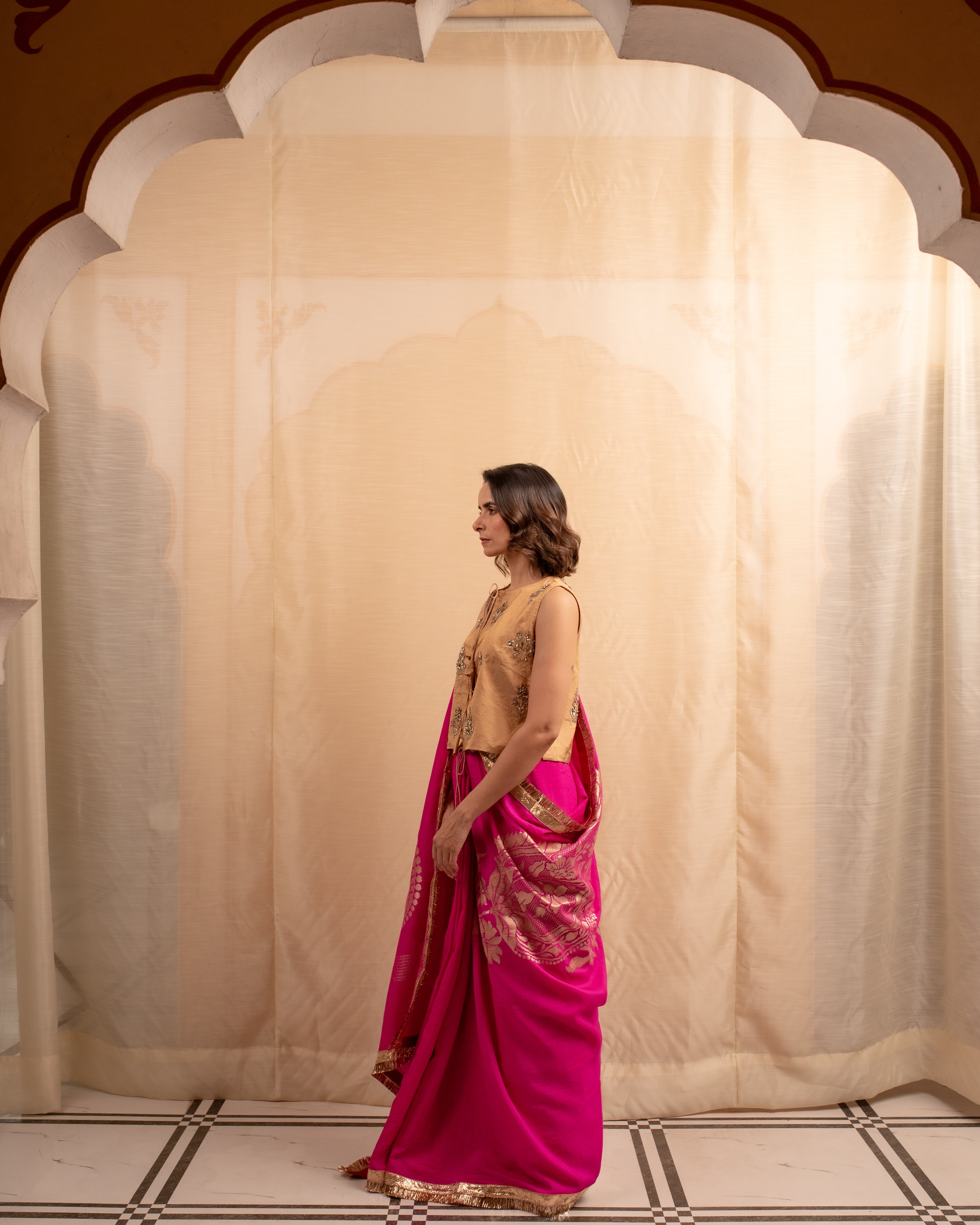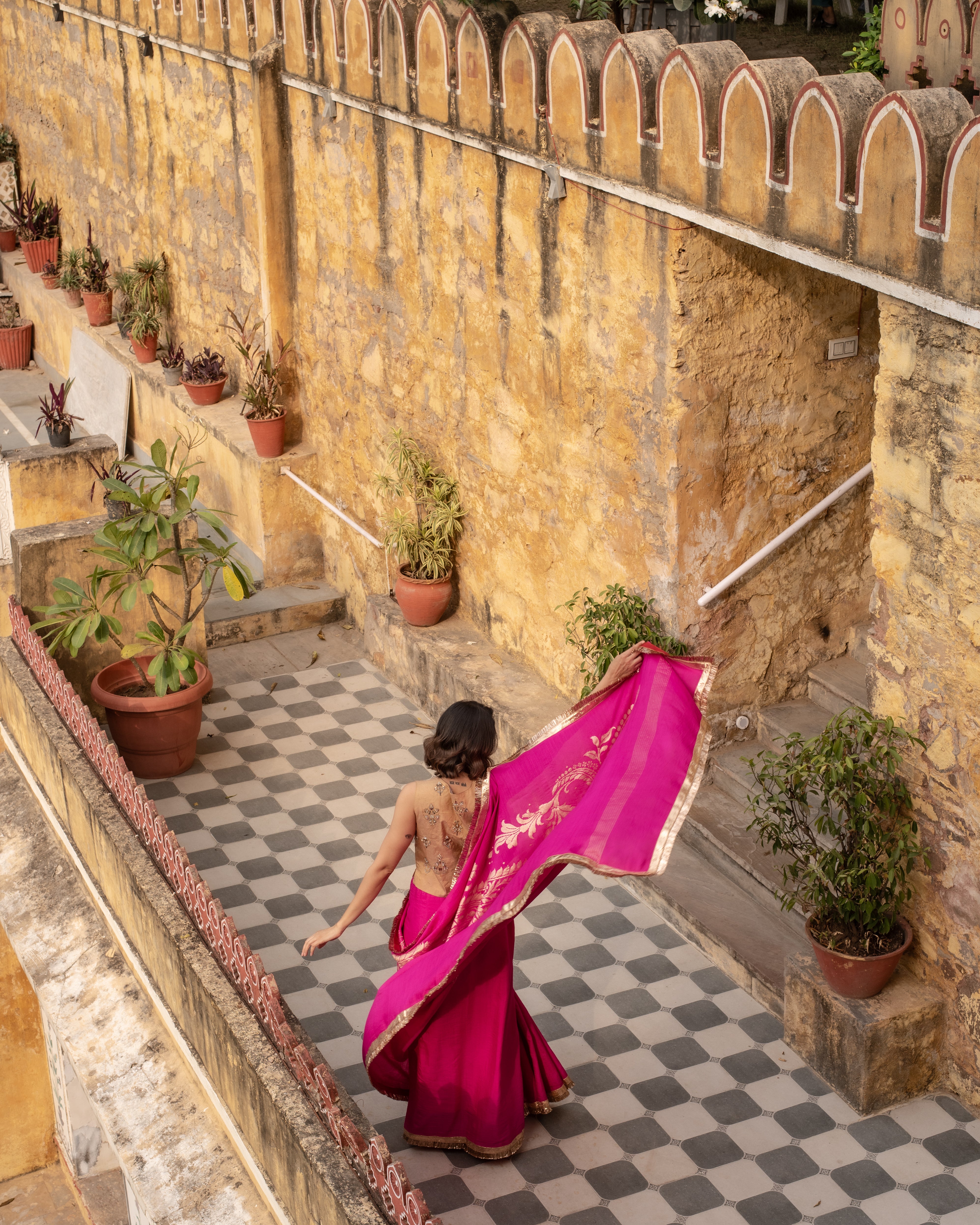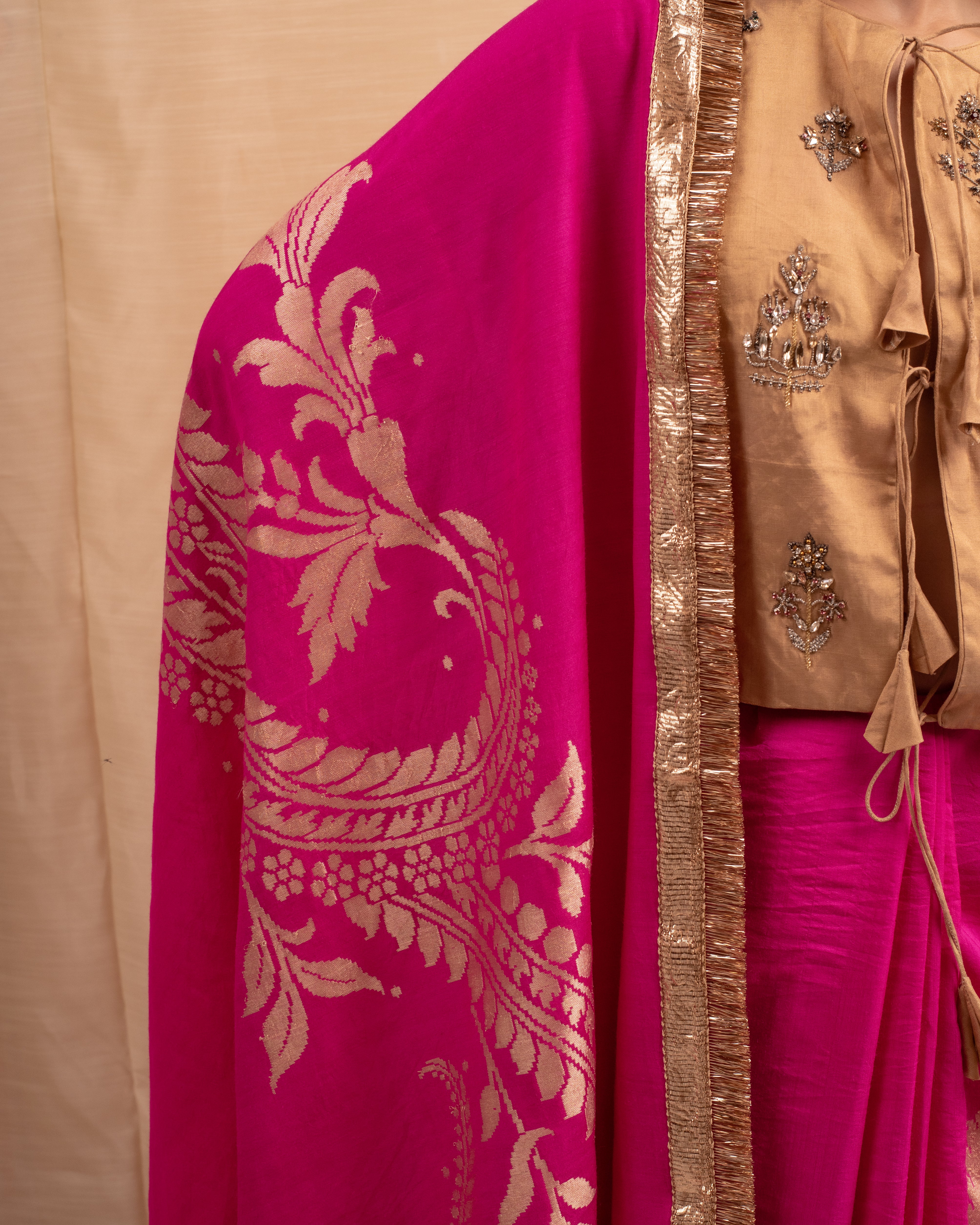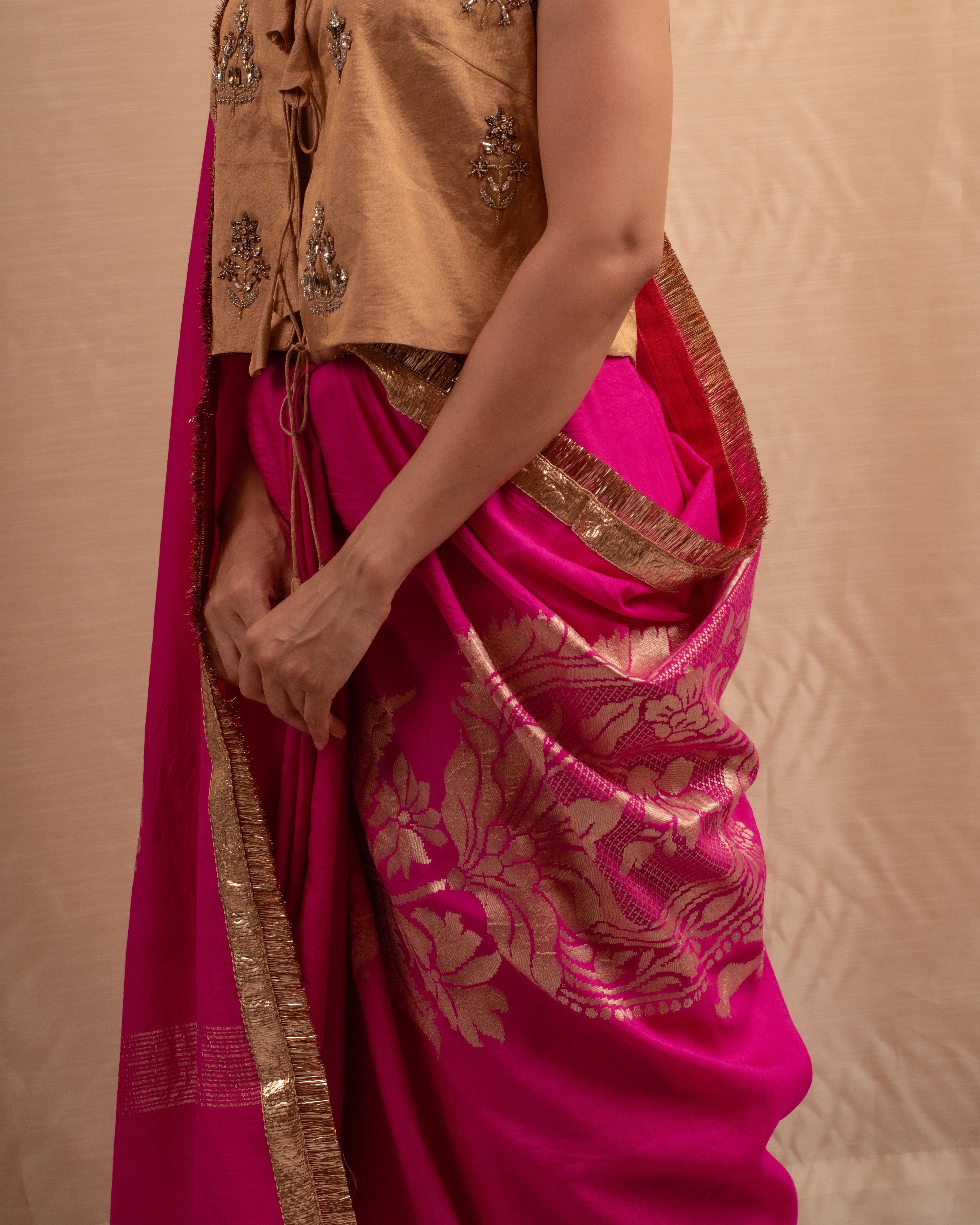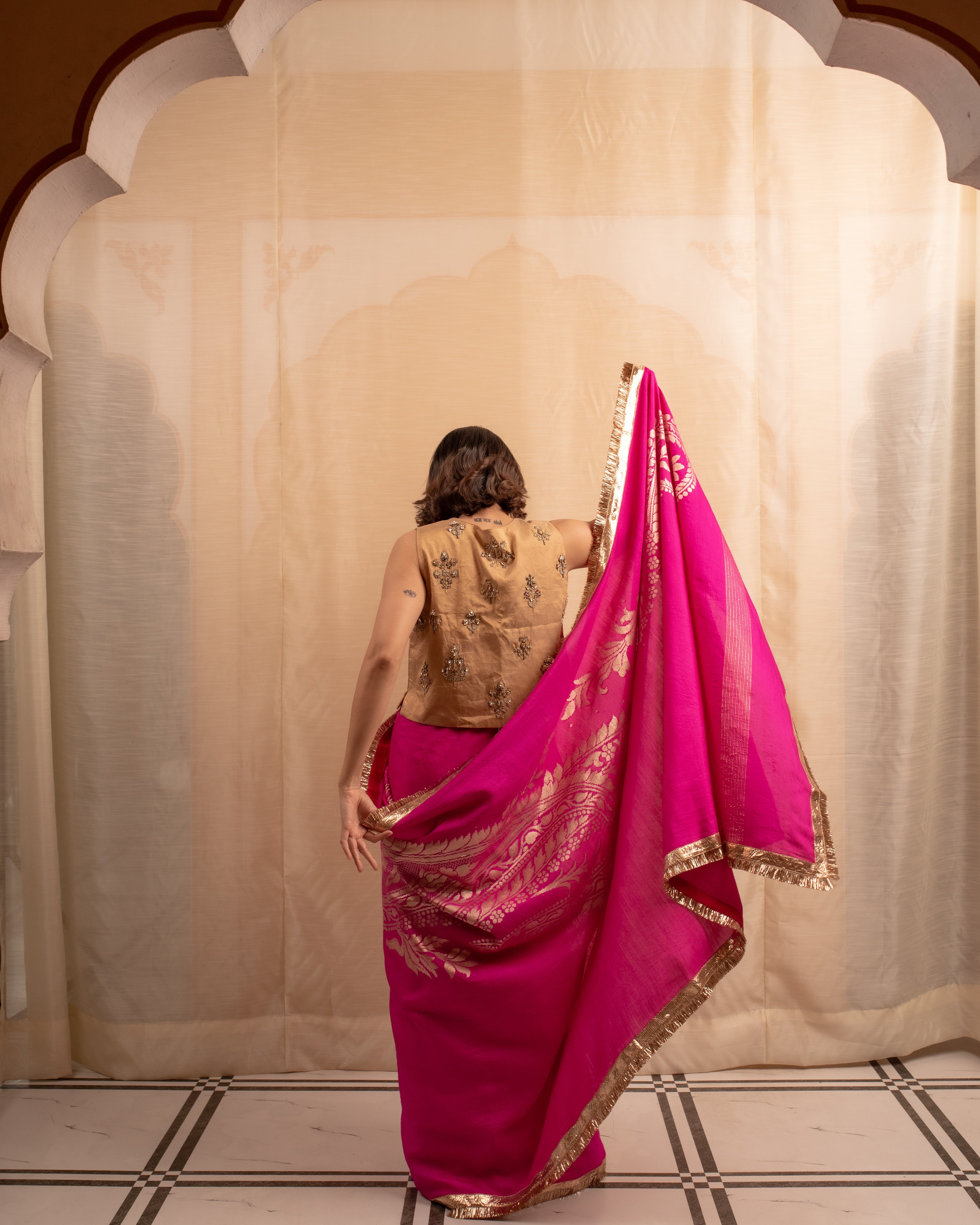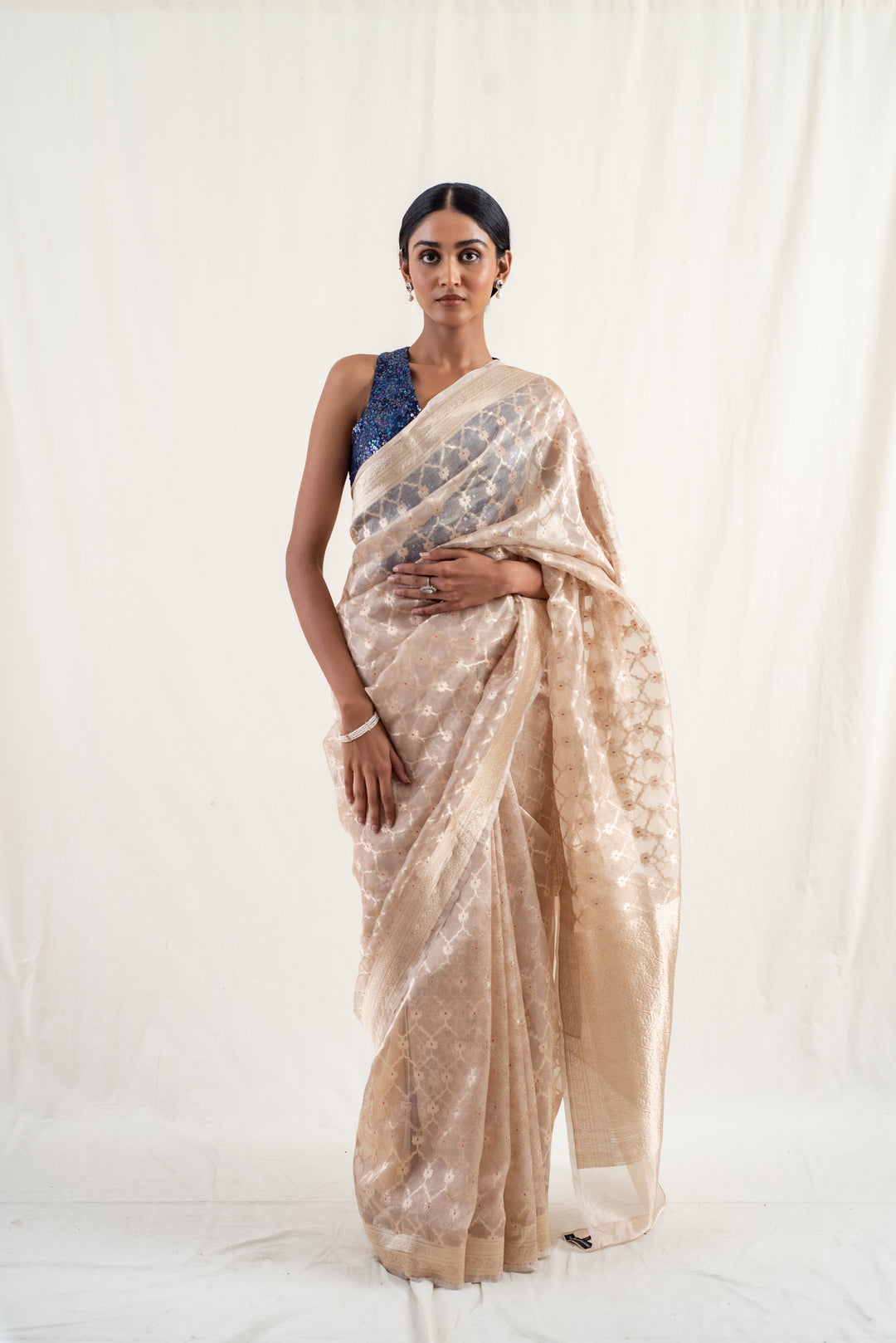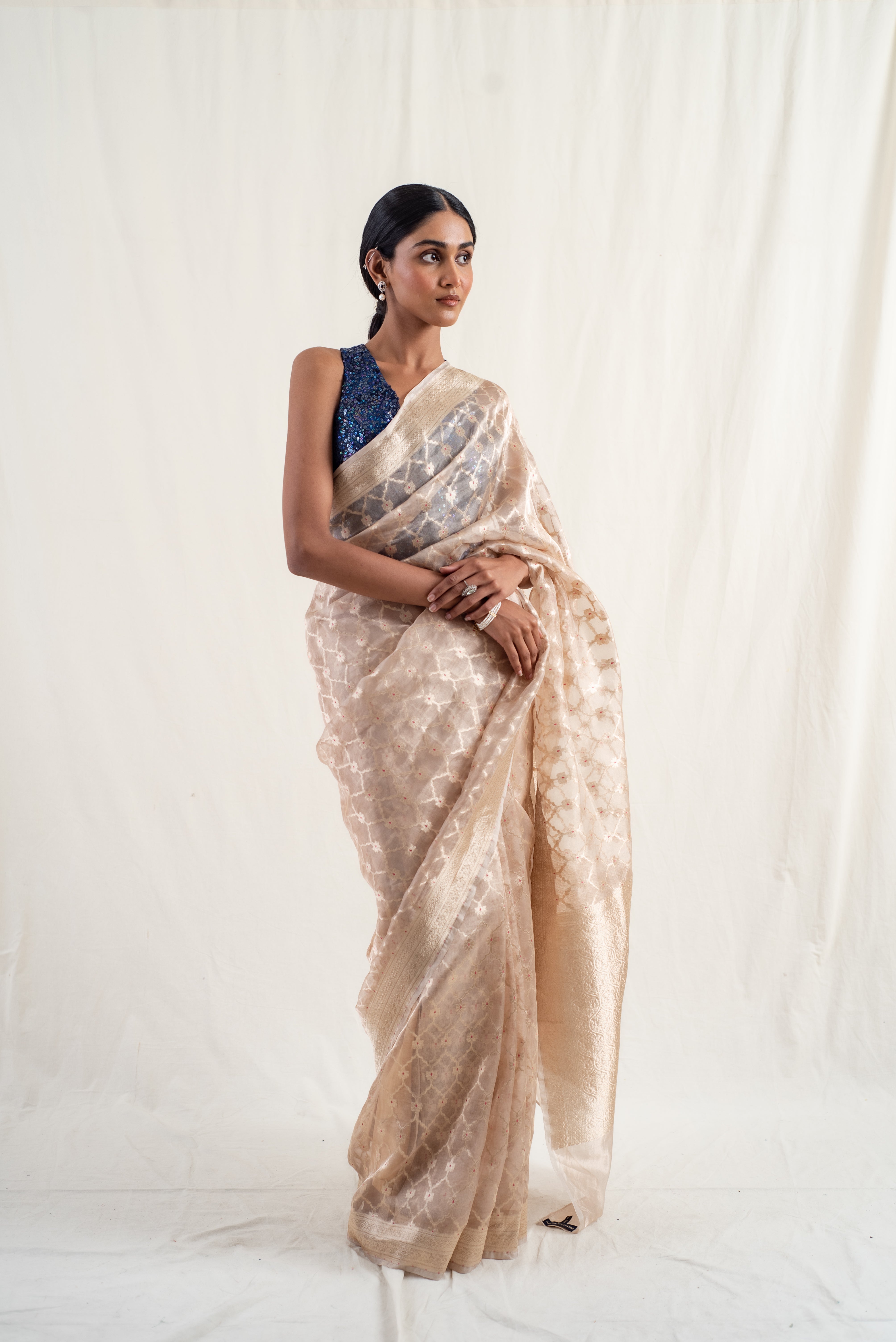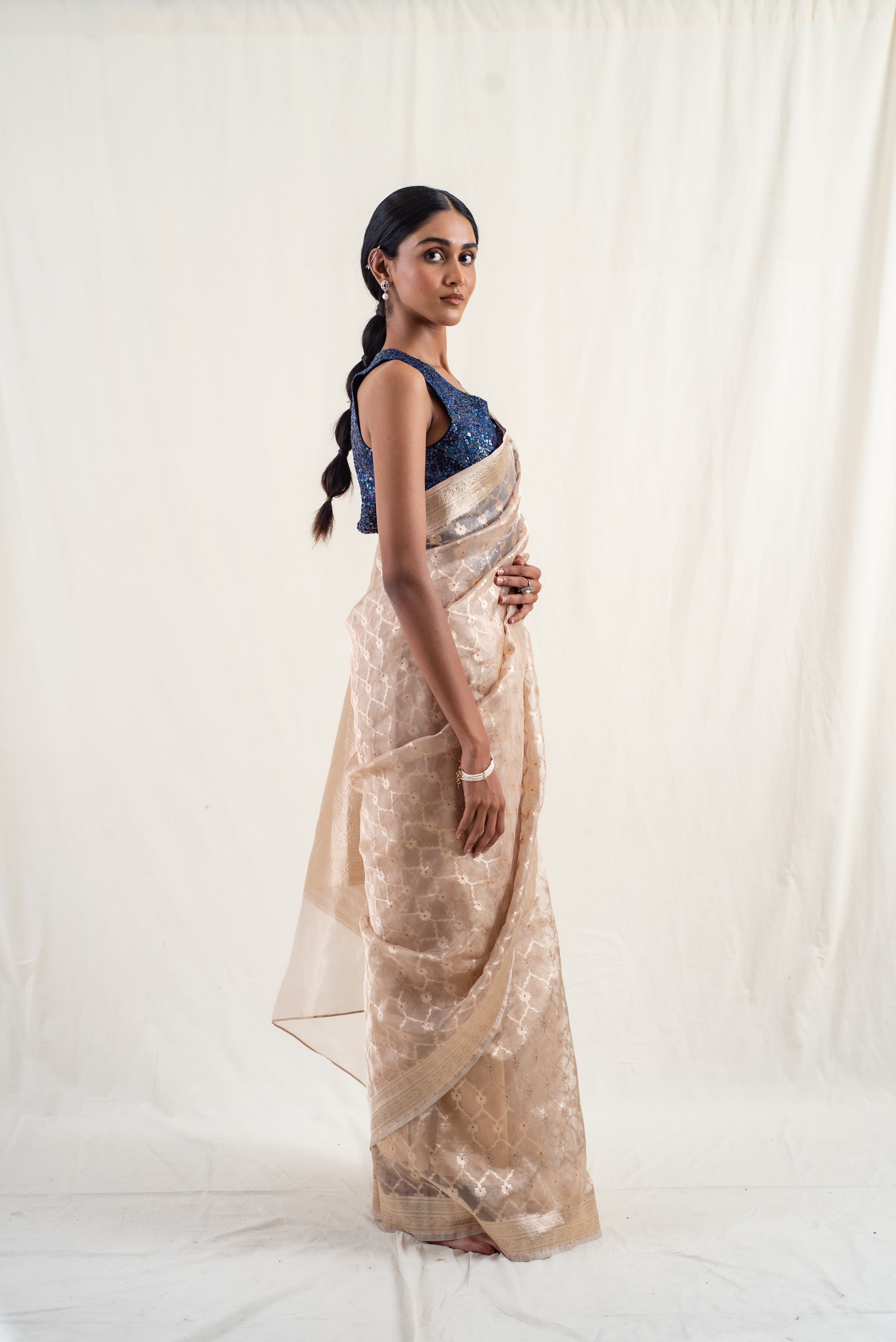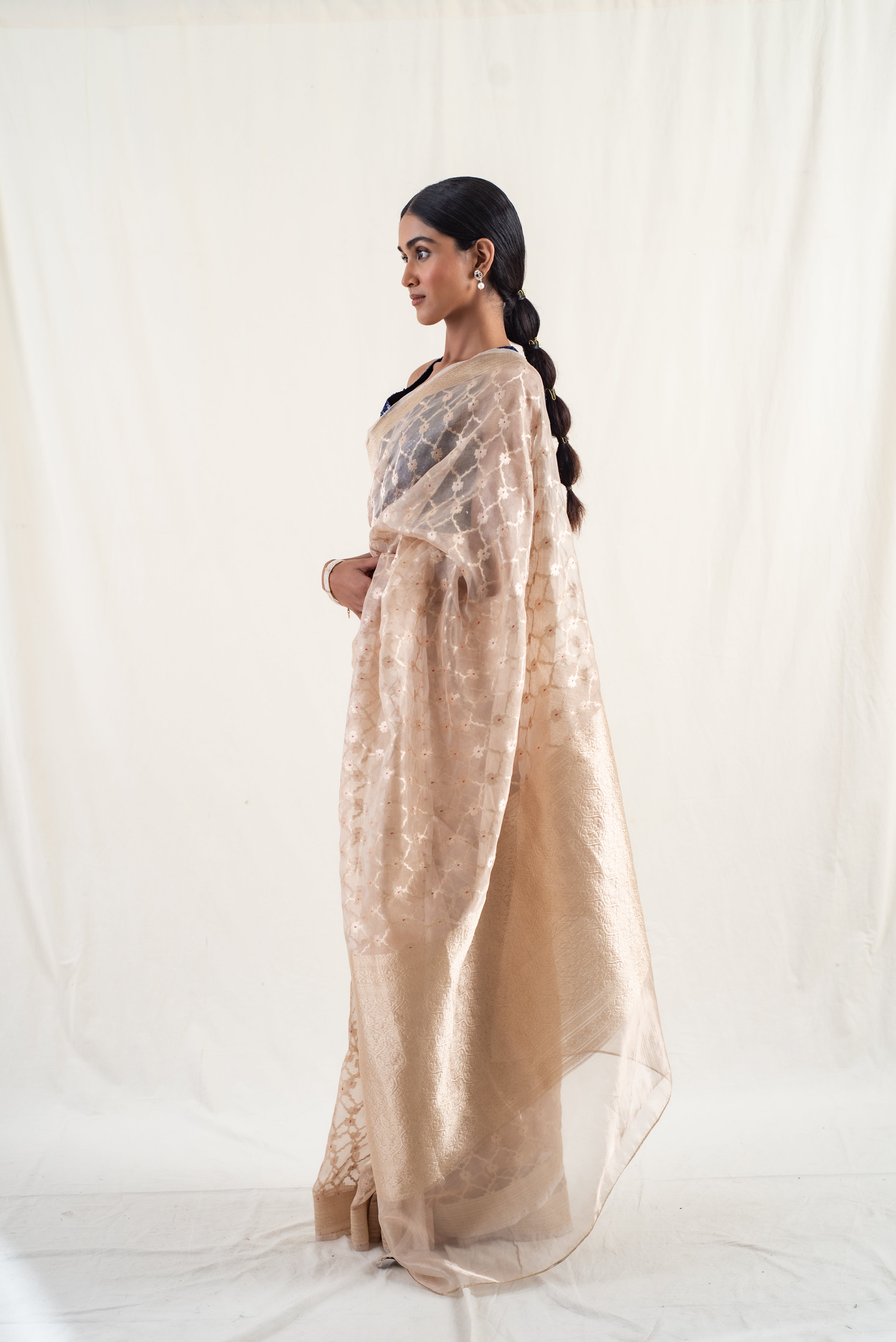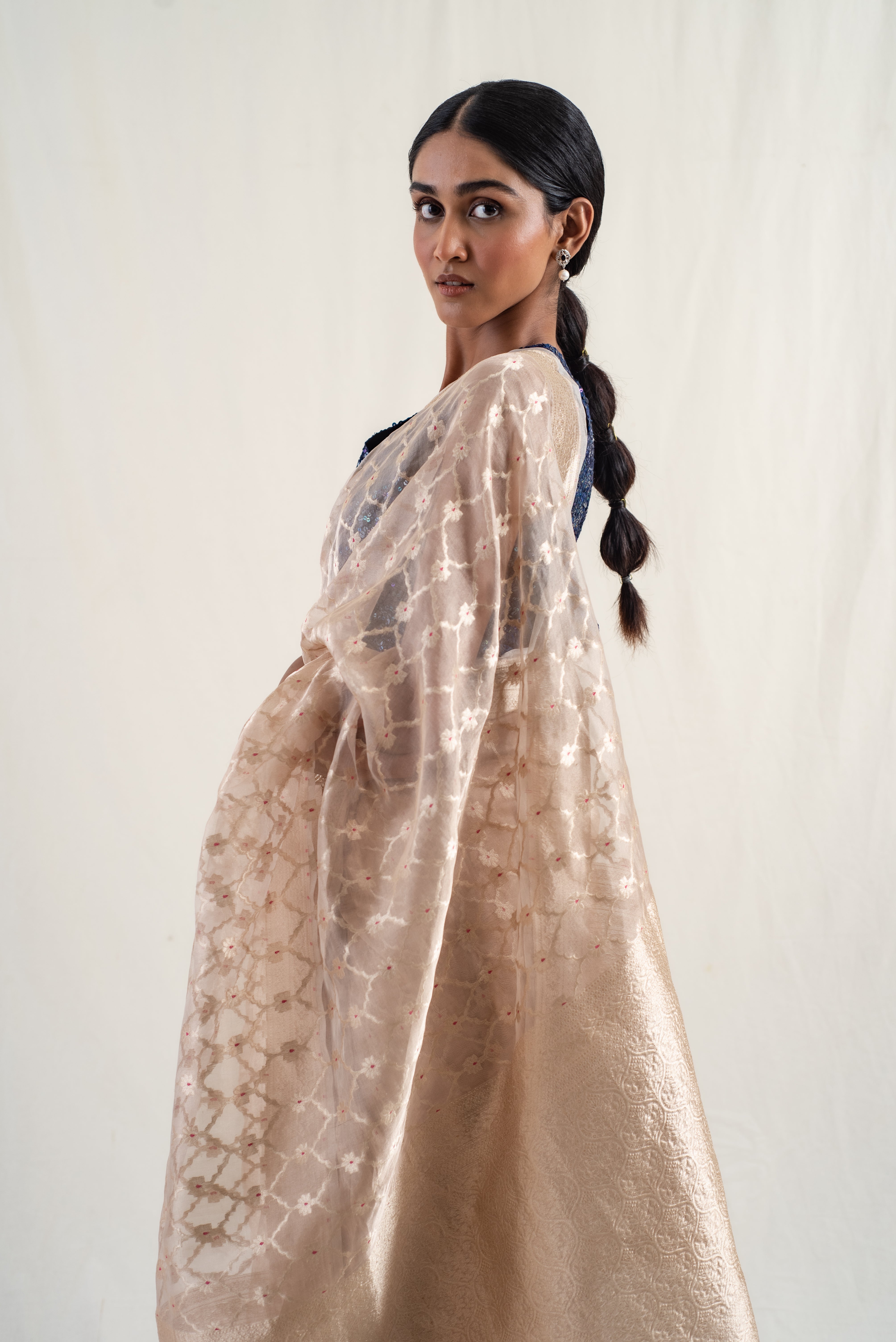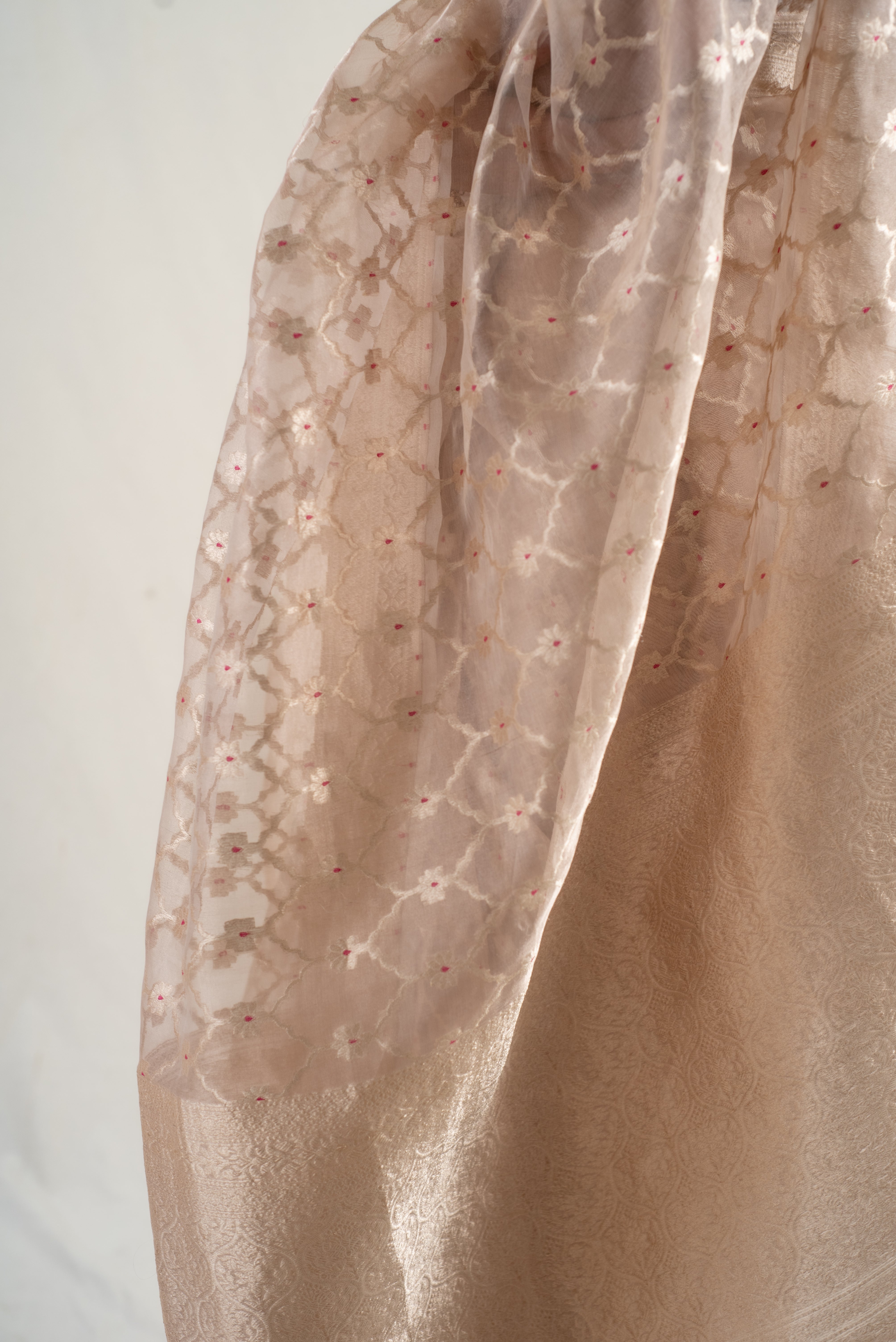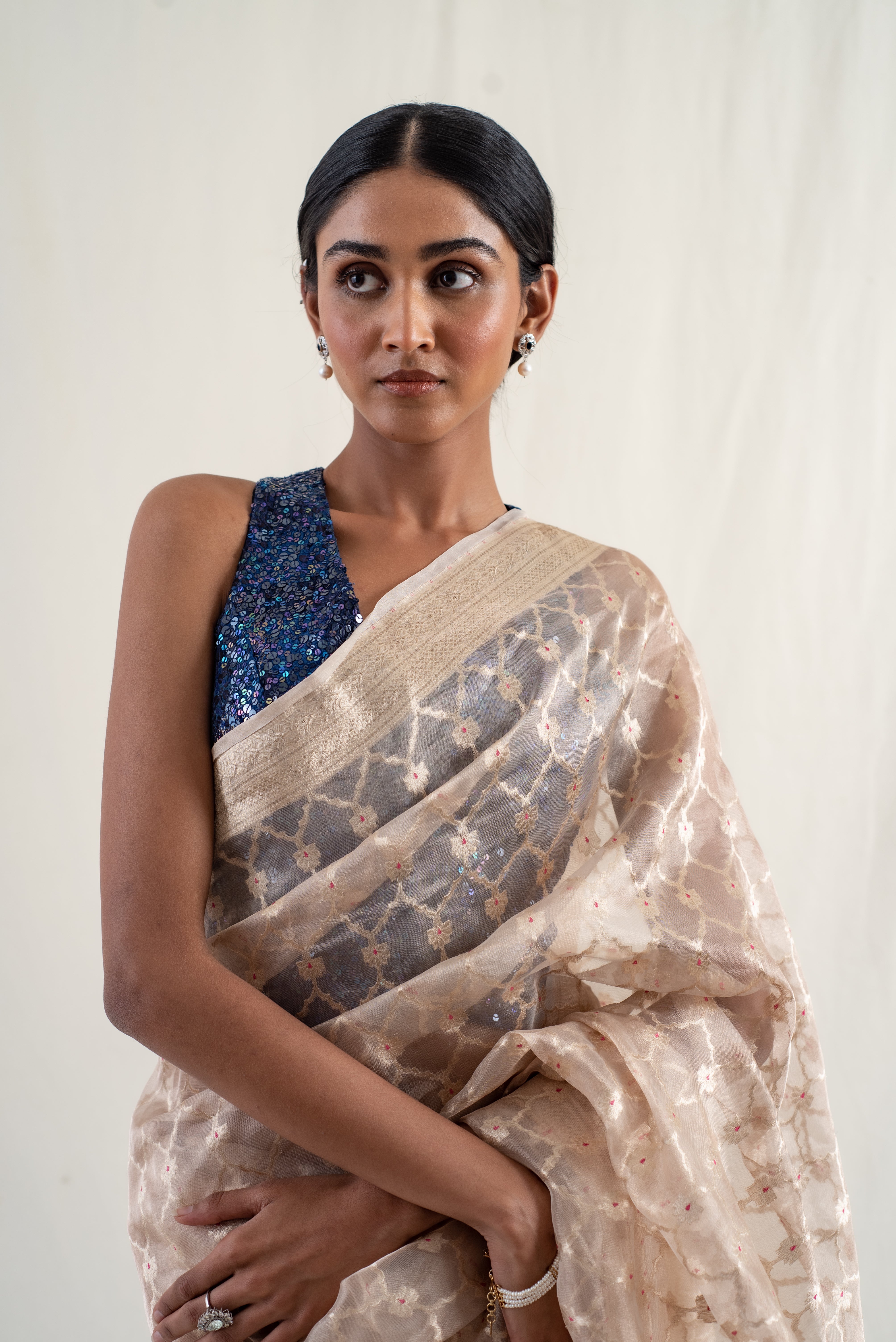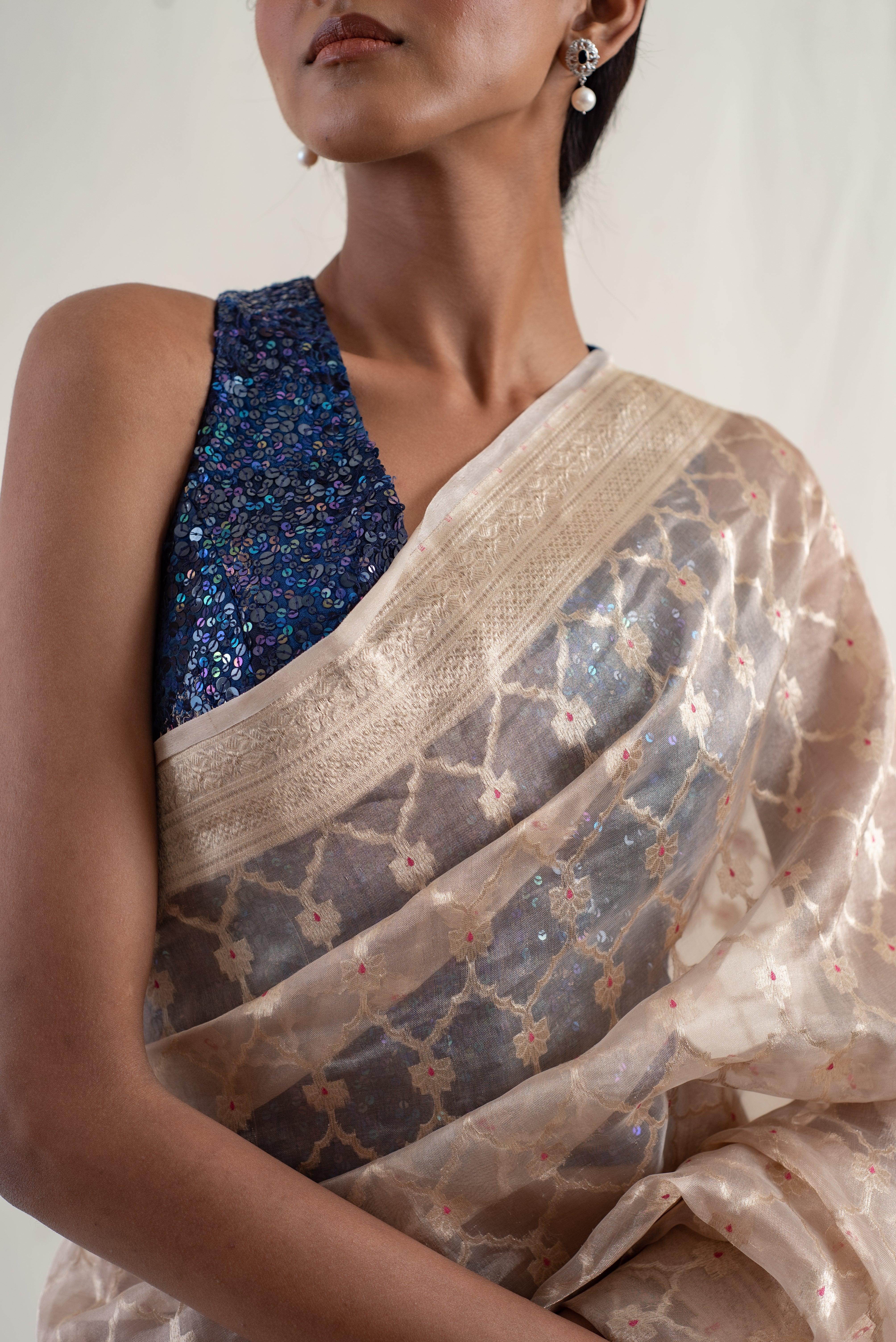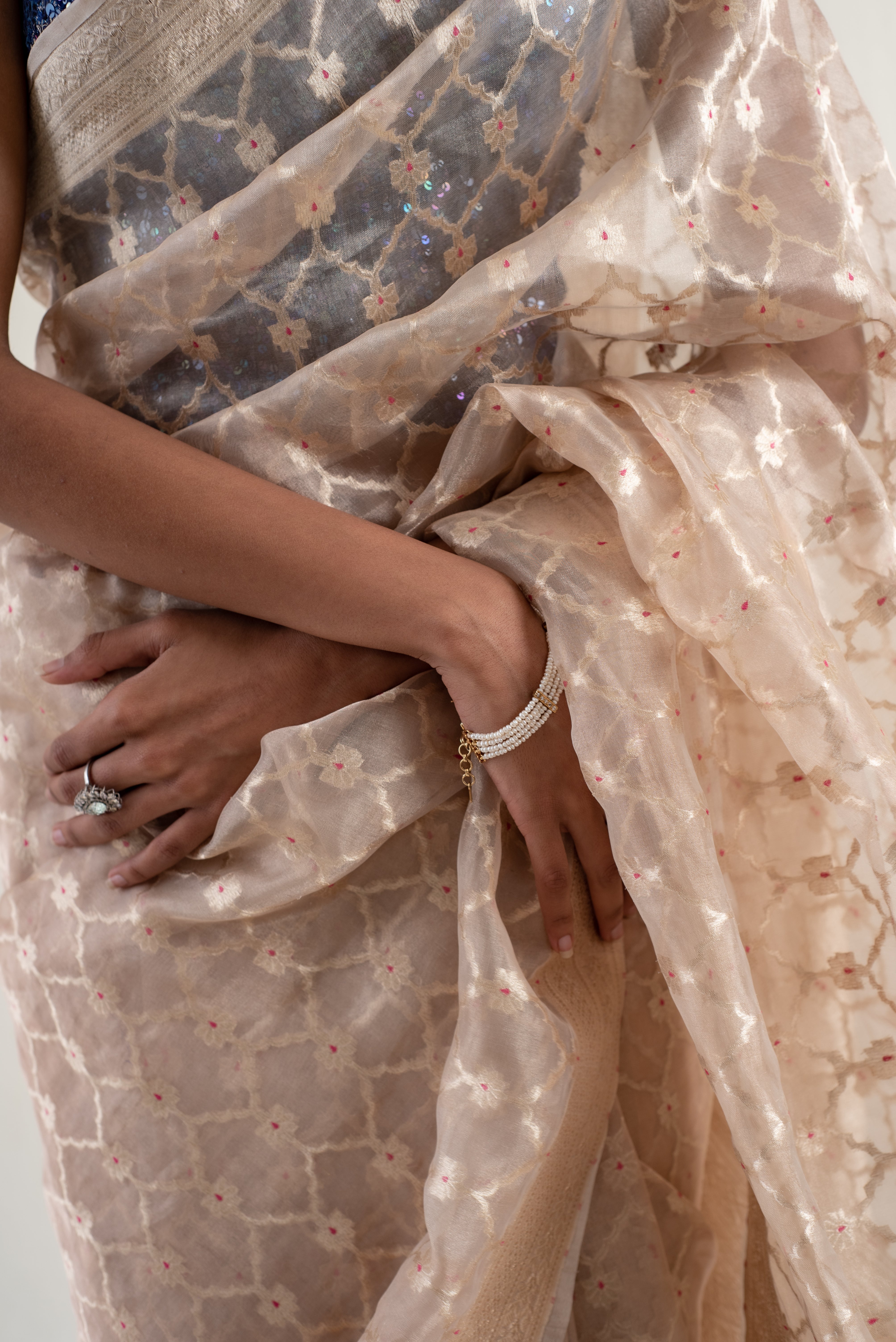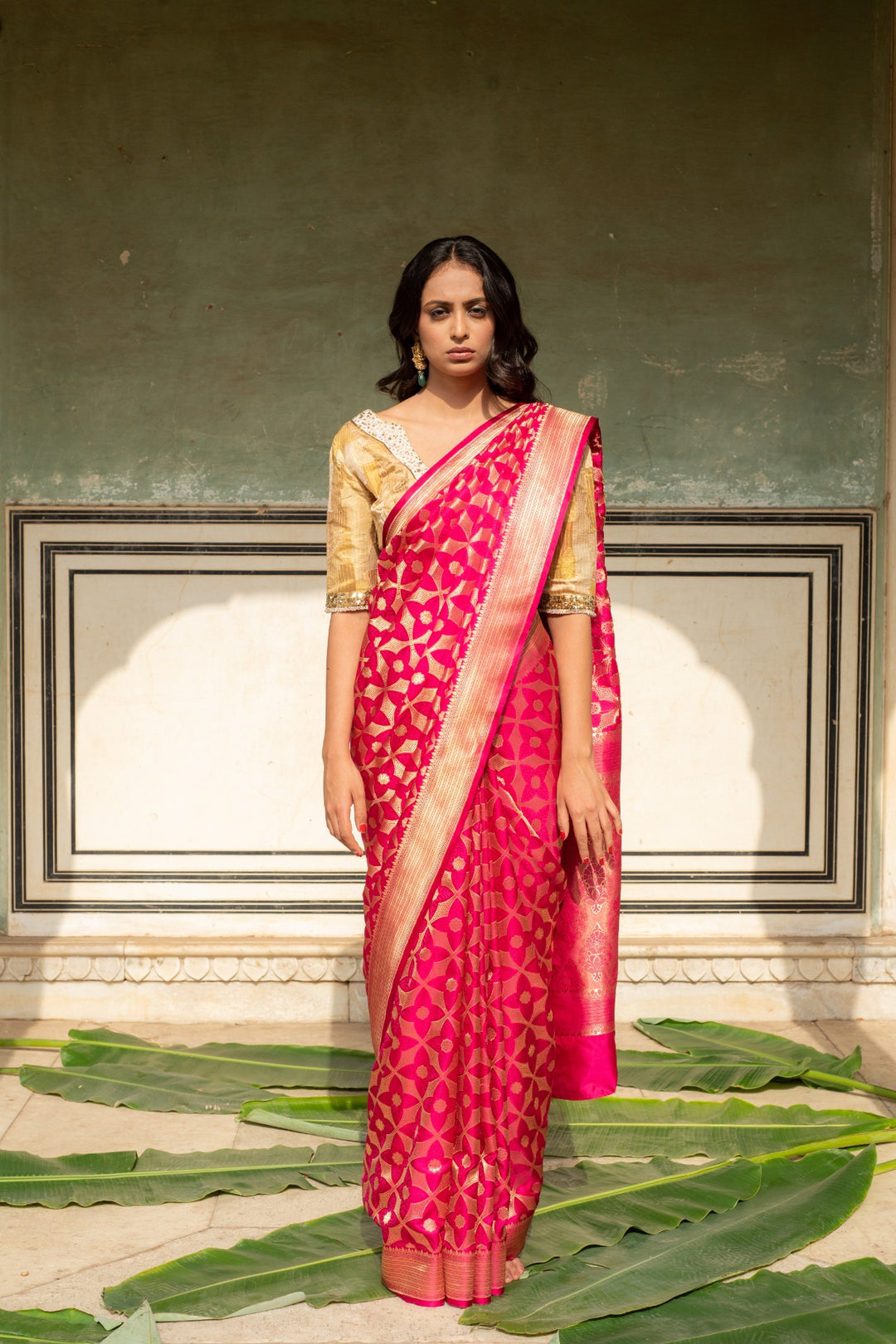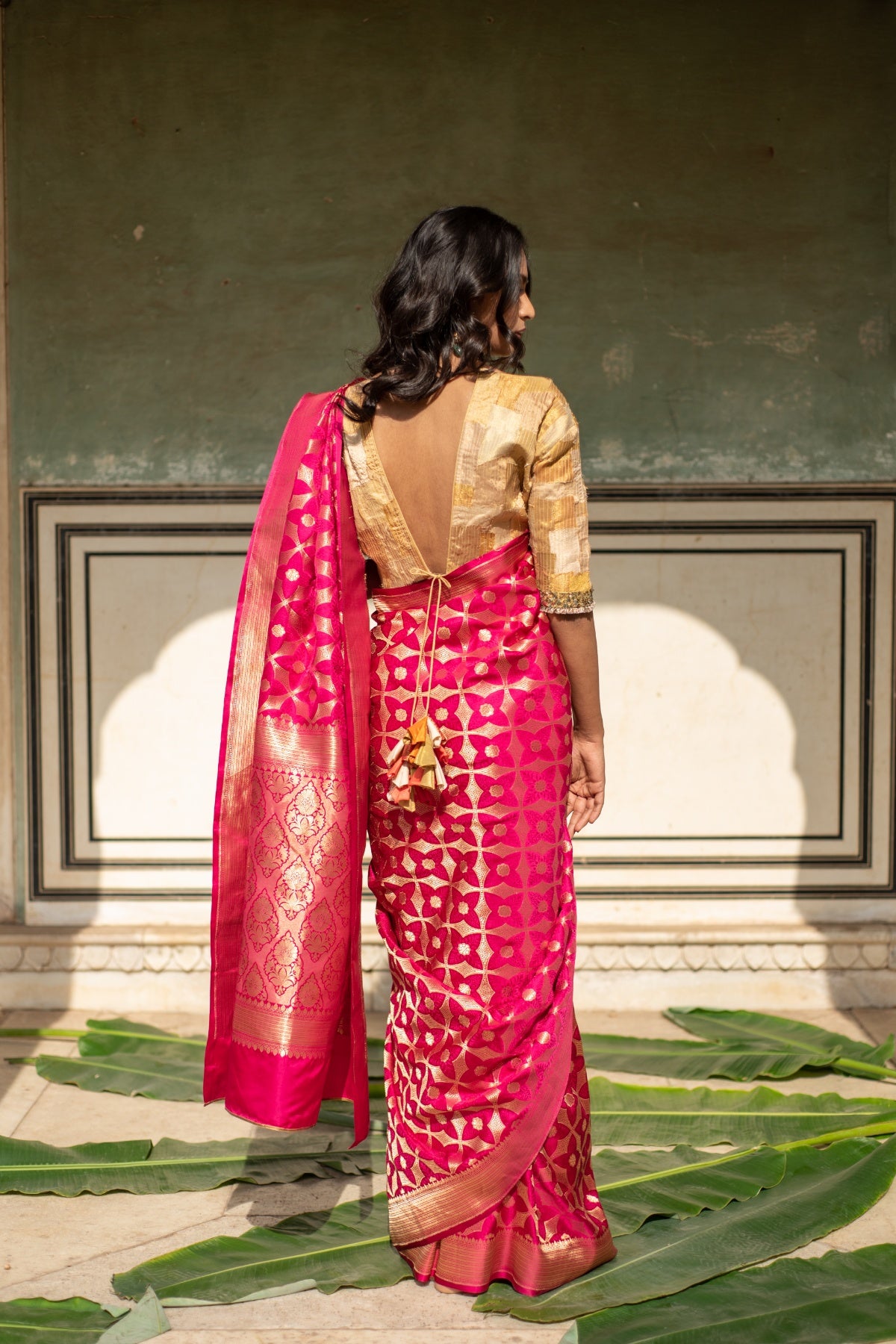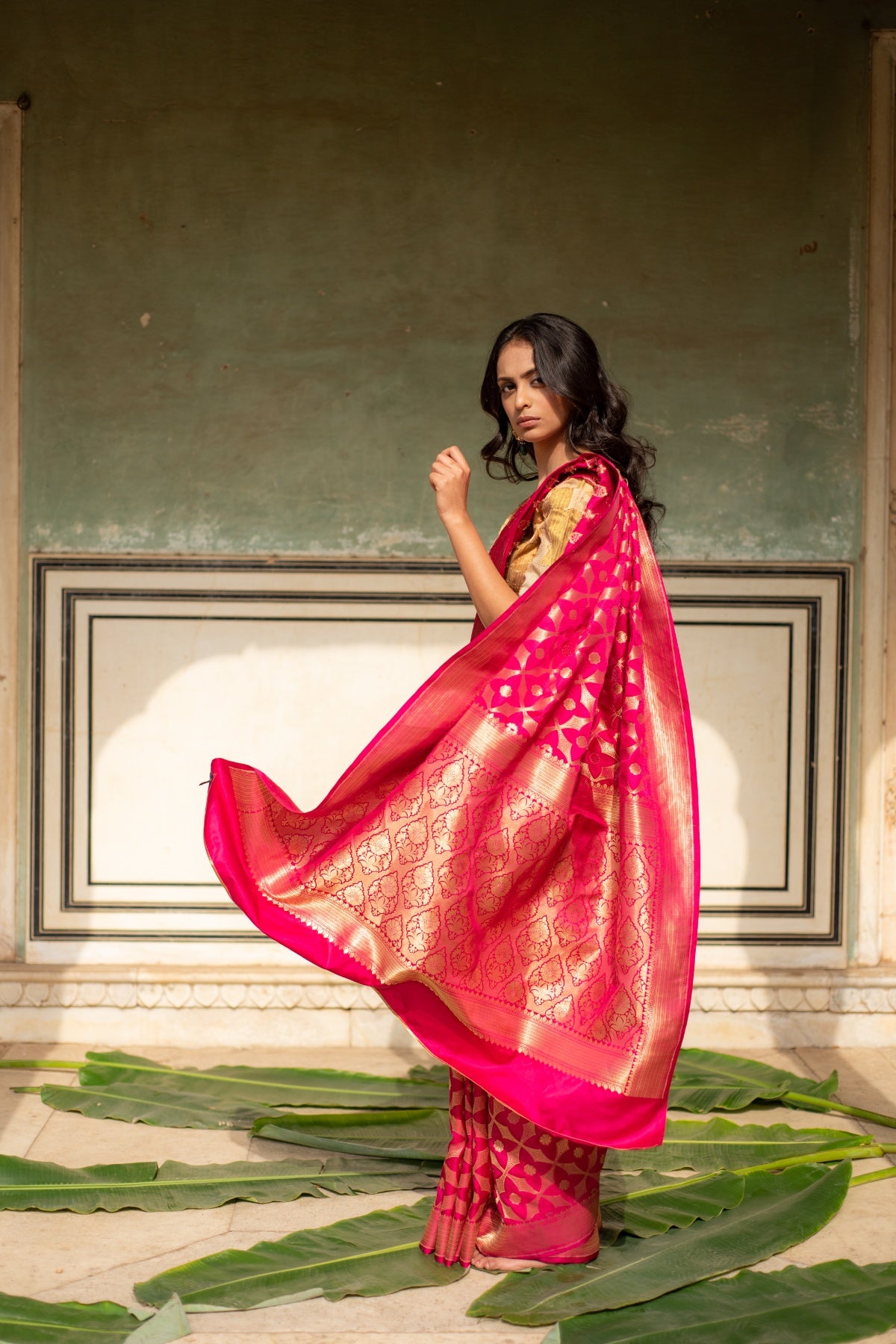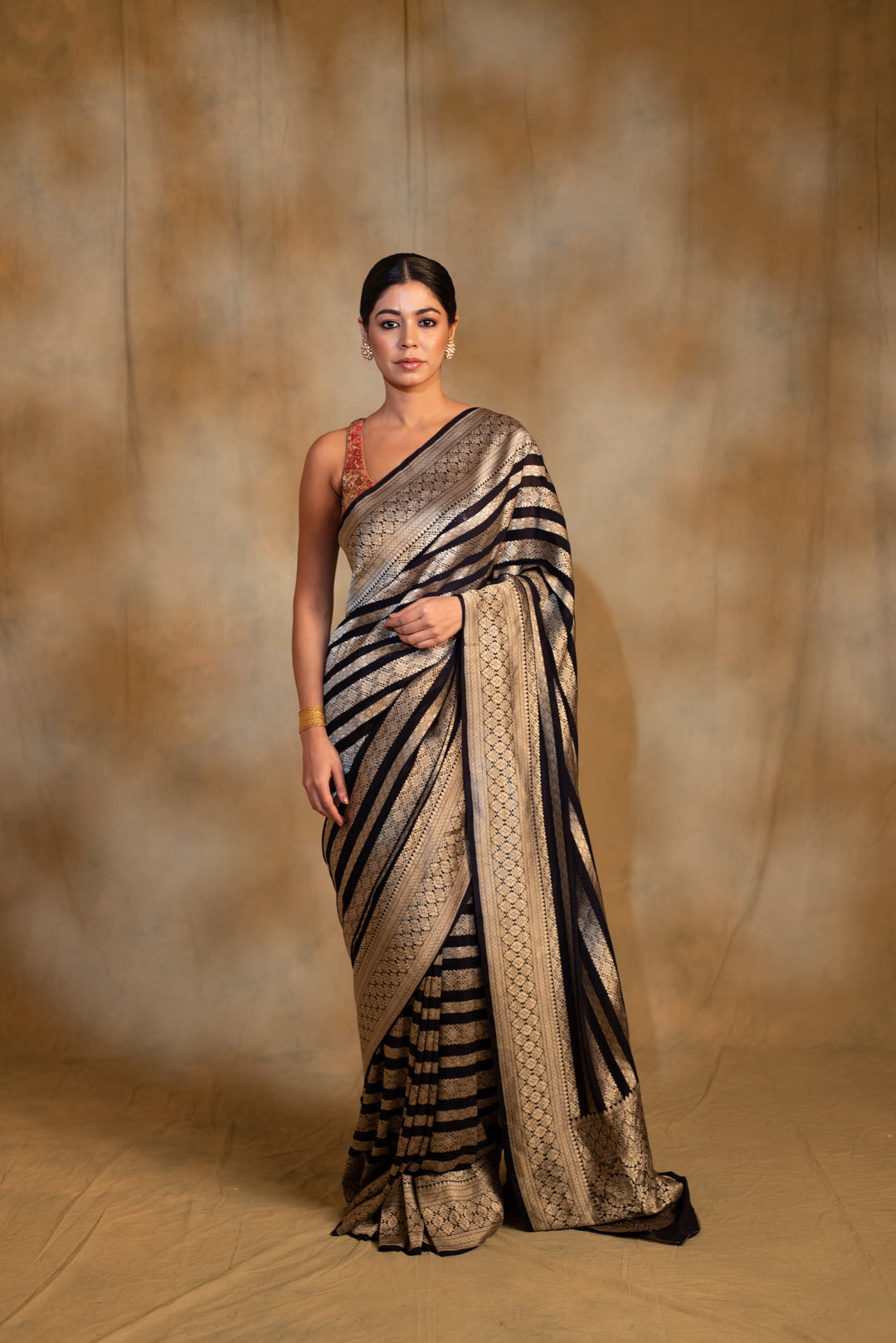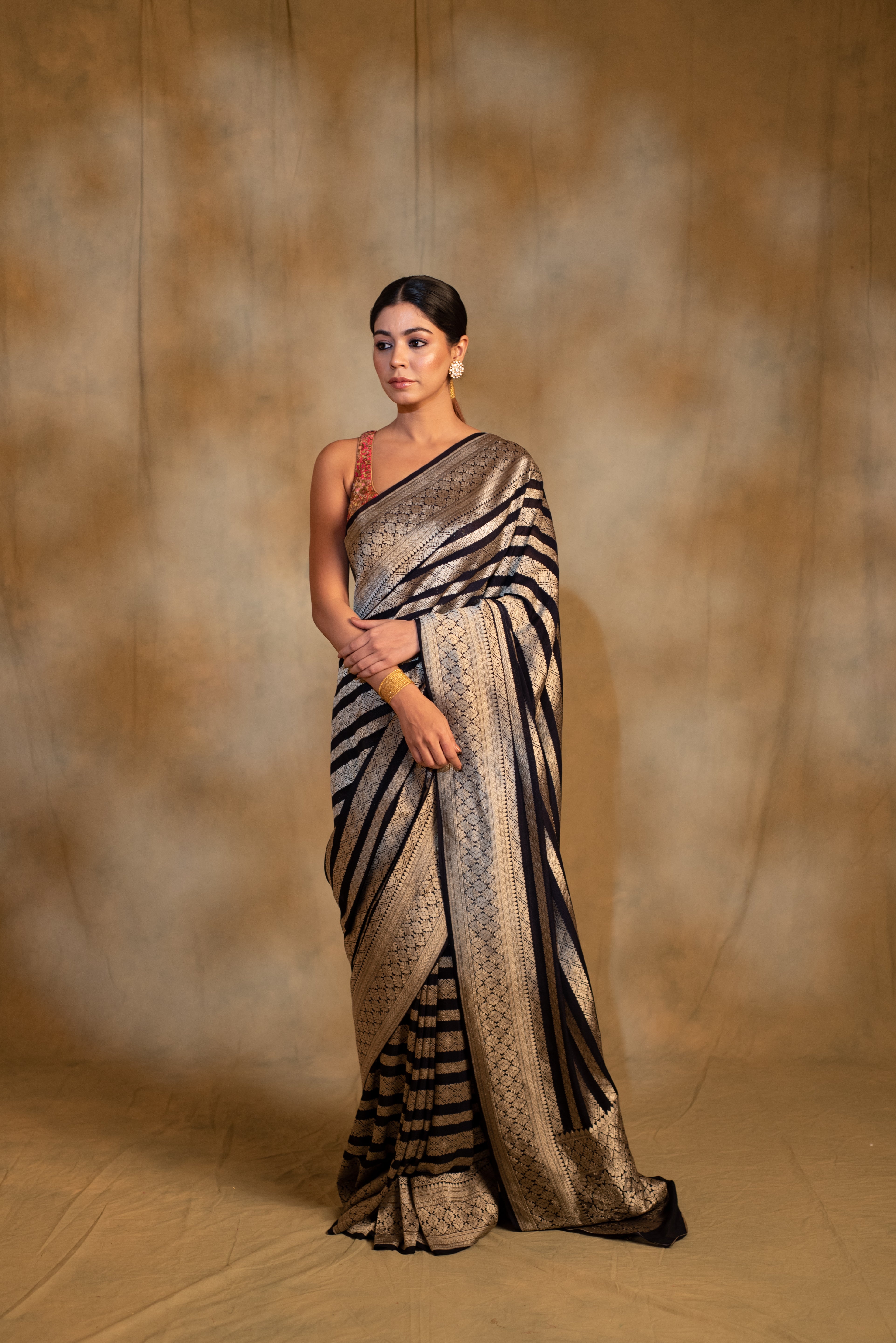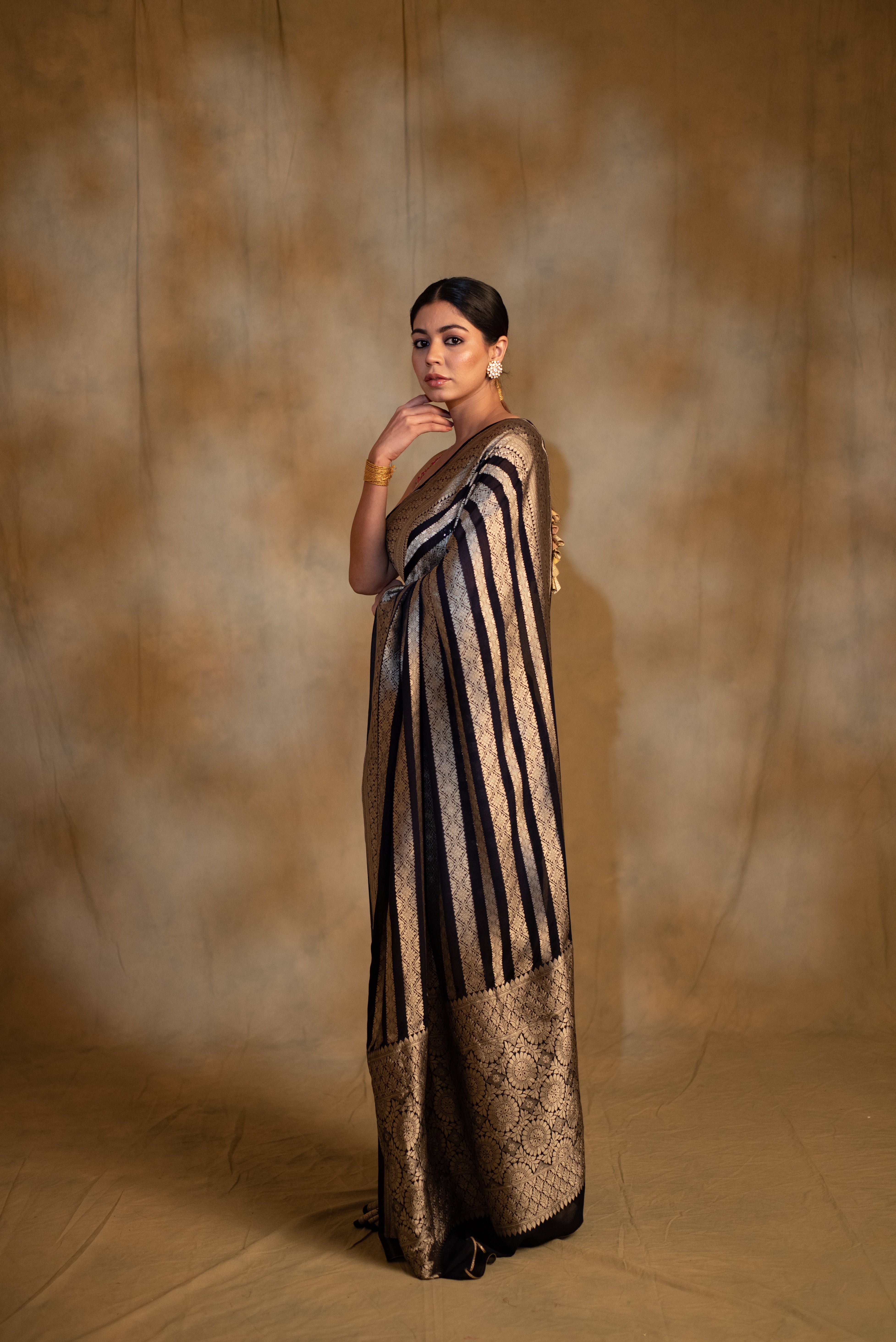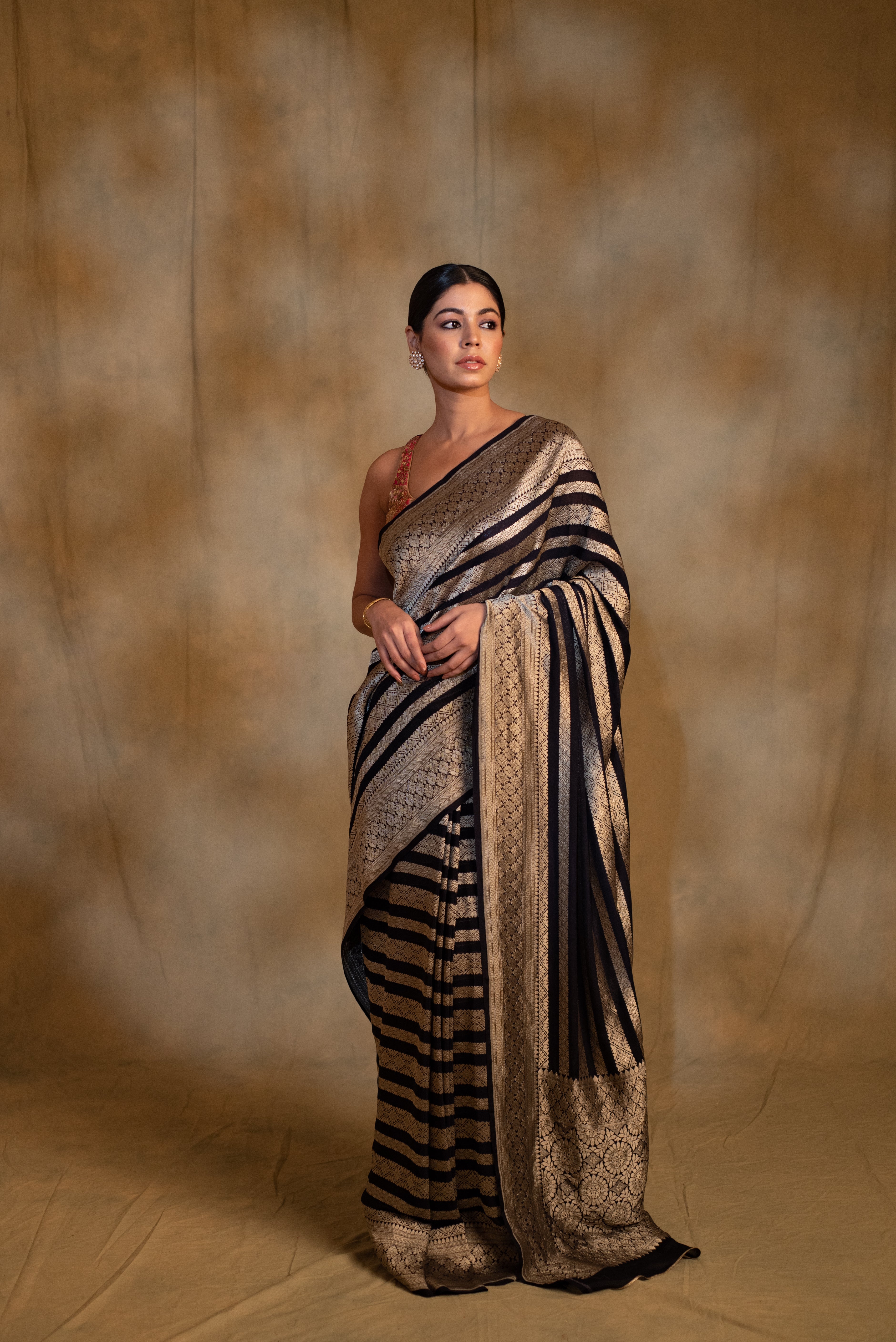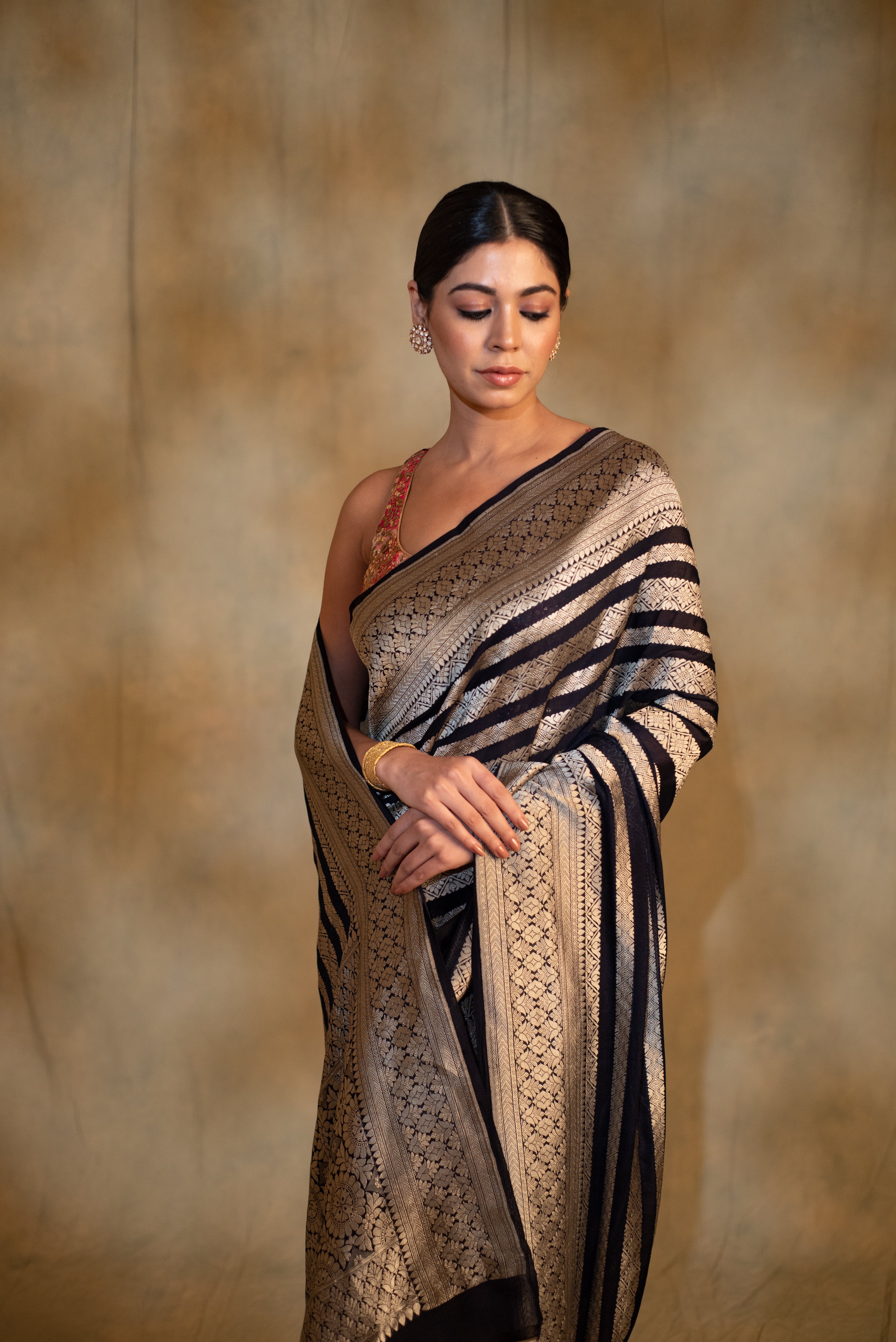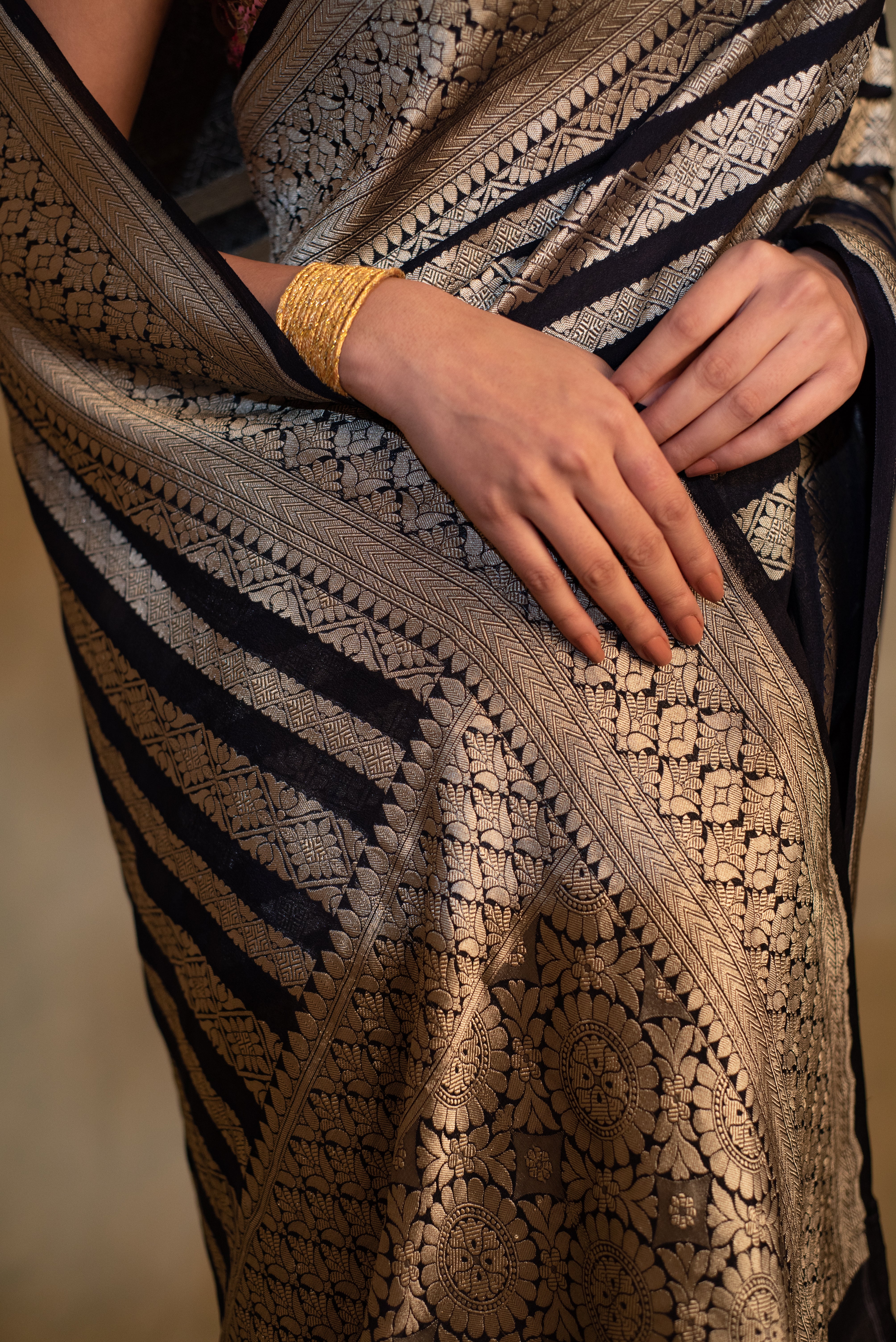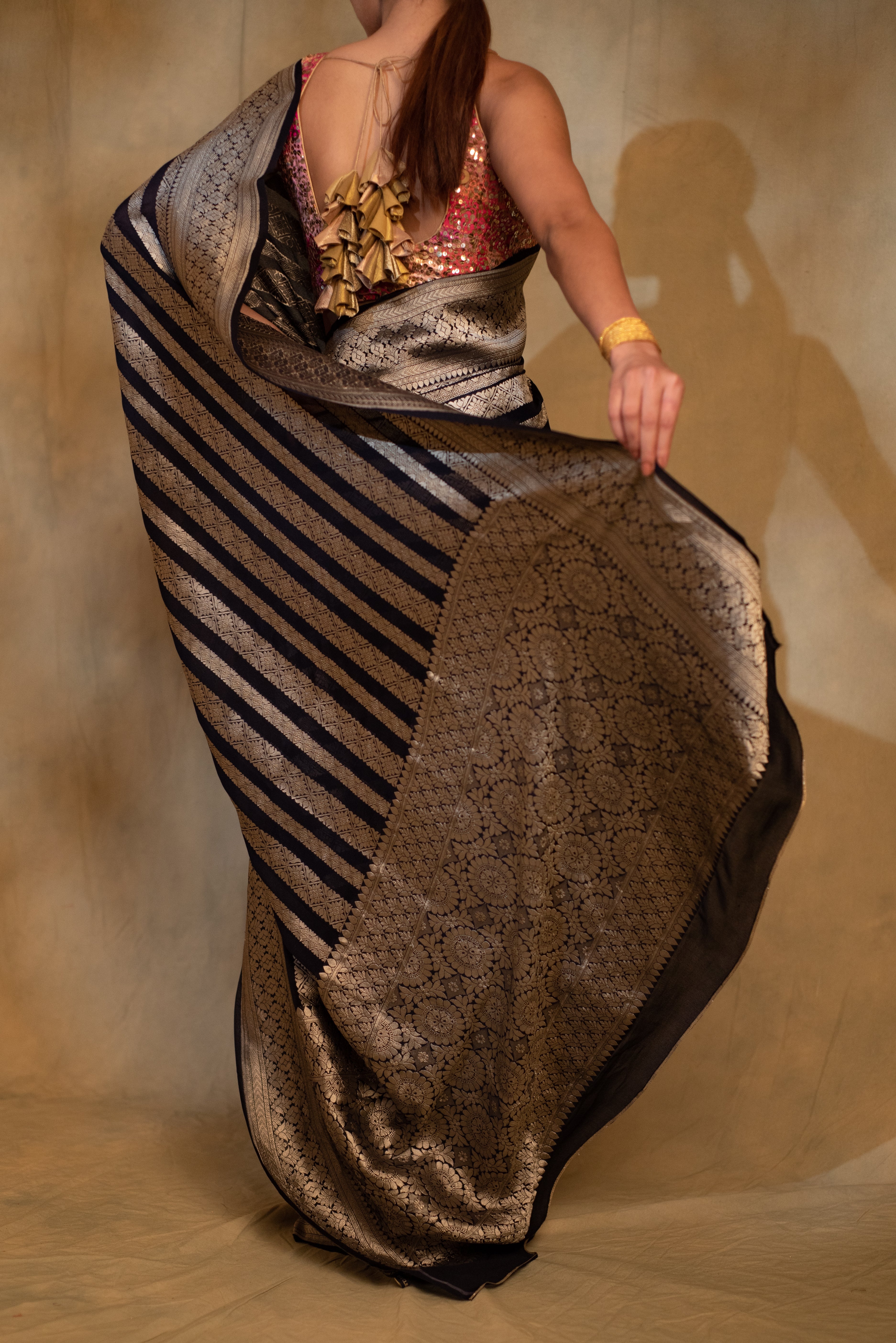Buy Banarasi Phekua Saree
Buy Banarasi Phekua Saree
Why Choose a Banarasi Phekua Saree by Priyanka Raajiv?
Each saree from the Phekua Collection is lovingly handwoven, rooted in centuries-old techniques typically preserved and practised by master artisans. Phekua weaving blends motifs, borders, and textures by taking time, counting yarns, and honouring heritage.
At Priyanka Raajiv, these sarees are not made—they are cared for on the loom. Banarasi finesse comes alive and attains new life with fine detail, subtle colourways, and luxurious silk blends that fall away lightly. These garments are not made to be worn but to be worn with memory, preserving the weight of tradition, lightness of artistry, and elegant sense of restraint.
Here's why a Priyanka Raajiv Banarasi Phekua Saree is a long-term investment:
1. Ratna:
Shimmering in the soft hue of Indian pink, it's a Moonga Silk Banarasi Saree resplendent in ancient glory. Laced with one big paisley motif, it speaks of royal customs, further animated by lampi and kiran — an elegant sheen that weaves a gentle celebration along its fold. The movement of Banarasi silk, smothered in heritage artistry, guarantees an easy drape, making it the lyrical option for either extravagant bashes or solemn celebrations. This silk saree for women is a masterpiece where elegance meets grandeur.
2. Ima:
The Ima is a classic Banarasi tissue saree woven in a warm beige silk that feels feather-light yet holds its shape beautifully. It’s detailed with a fine floral jaal in soft gold zari—subtle enough to wear in the day, elegant enough to carry into the evening. The border and palla feature a floral weave that gives the saree definition without being overwhelming. What distinguishes it is the texture—the crisp feel of silk tissue and the barely-there shimmer of zari make it perfect for intimate parties or solemn occasions.
3. Chaitra:
The Chaitra saree in navy blue is crafted from the soft luxury of Banarasi georgette, embodying subtle sophistication. The floral motifs flow gracefully across the fabric, creating a sense of rhythm and fluidity with every drape. The vintage silver border and pallu catch the light just enough to add a touch of old-world charm without being overwhelming. Finished with traditional cutwork, this saree is a timeless piece that feels personal and is meant to be worn, cherished, and passed down through generations.
4. Falisha:
Classic and deeply rooted in tradition, Falisha is a saree that exudes joy. Immersed in an opulent Indian pink, its Banarasi silk brocade is alive with a spirited dance of floral and geometric jaal, each motif a symbol of generations of artisans. The gold-embellished border and palla glimmer with old-world sophistication, bringing the sophistication of another time into our own.
Complemented by the Sachi blouse, a work of art in itself, made of upcycled patchwork in gold and beige hues, this outfit is not merely fashion—it's a celebration of responsible luxury. Each pleat is a memory; each glint is a recollection. Falisha is for the one who lives tradition with a contemporary heart, for experiences that are meant to be treasured.
Here's why a Priyanka Raajiv Banarasi Phekua Saree is a long-term investment:
1. Ratna:
Shimmering in the soft hue of Indian pink, it's a Moonga Silk Banarasi Saree resplendent in ancient glory. Laced with one big paisley motif, it speaks of royal customs, further animated by lampi and kiran — an elegant sheen that weaves a gentle celebration along its fold. The movement of Banarasi silk, smothered in heritage artistry, guarantees an easy drape, making it the lyrical option for either extravagant bashes or solemn celebrations. This silk saree for women is a masterpiece where elegance meets grandeur.
2. Ima:
The Ima is a classic Banarasi tissue saree woven in a warm beige silk that feels feather-light yet holds its shape beautifully. It’s detailed with a fine floral jaal in soft gold zari—subtle enough to wear in the day, elegant enough to carry into the evening. The border and palla feature a floral weave that gives the saree definition without being overwhelming. What distinguishes it is the texture—the crisp feel of silk tissue and the barely-there shimmer of zari make it perfect for intimate parties or solemn occasions.
3. Chaitra:
The Chaitra saree in navy blue is crafted from the soft luxury of Banarasi georgette, embodying subtle sophistication. The floral motifs flow gracefully across the fabric, creating a sense of rhythm and fluidity with every drape. The vintage silver border and pallu catch the light just enough to add a touch of old-world charm without being overwhelming. Finished with traditional cutwork, this saree is a timeless piece that feels personal and is meant to be worn, cherished, and passed down through generations.
4. Falisha:
Classic and deeply rooted in tradition, Falisha is a saree that exudes joy. Immersed in an opulent Indian pink, its Banarasi silk brocade is alive with a spirited dance of floral and geometric jaal, each motif a symbol of generations of artisans. The gold-embellished border and palla glimmer with old-world sophistication, bringing the sophistication of another time into our own.
Complemented by the Sachi blouse, a work of art in itself, made of upcycled patchwork in gold and beige hues, this outfit is not merely fashion—it's a celebration of responsible luxury. Each pleat is a memory; each glint is a recollection. Falisha is for the one who lives tradition with a contemporary heart, for experiences that are meant to be treasured.
How to Style or Drape a Banarasi Phekua Saree?
Styling up a Banarasi Phekua saree can be mixed with both traditional and contemporary aspects of wearing a saree. Each drape or accessory communicates the wearer's personality and describes the uniqueness of the saree and the person wearing it.
Vintage Drape: A vintage drape allows the Banarasi weave to be viewed in all its detail, and craftspeople from Banaras are comprehensive, showcasing the timeless garment.
Jewellery Pairing: Temple jewellery allows the vintage sensibility to be established. Whereas Polki or Jadau pieces bring a royal style together.
Contrasting Blouse: Adding a brocade, velvet, or Mashroo silk blouse levels up the saree by creating complementary contrast.
Belted Saree: A statement belt cinching the waist adds a modern structure to the garment.
Layered Draping: Mixing a pre-stitched pleat or even a cape-style draping, a saree can now be a statement attire in itself.
Minimal jewellery: Adding small pearl earrings or diamond earrings brings a very strict sense of sensitivity that still allows the saree to have a life of its own.
Regardless of the way that you choose to style the Banarasi Phekua saree, it will demonstrate a different angle to the saree, which is why it is so versatile for traditional and modern occasions.
Vintage Drape: A vintage drape allows the Banarasi weave to be viewed in all its detail, and craftspeople from Banaras are comprehensive, showcasing the timeless garment.
Jewellery Pairing: Temple jewellery allows the vintage sensibility to be established. Whereas Polki or Jadau pieces bring a royal style together.
Contrasting Blouse: Adding a brocade, velvet, or Mashroo silk blouse levels up the saree by creating complementary contrast.
Belted Saree: A statement belt cinching the waist adds a modern structure to the garment.
Layered Draping: Mixing a pre-stitched pleat or even a cape-style draping, a saree can now be a statement attire in itself.
Minimal jewellery: Adding small pearl earrings or diamond earrings brings a very strict sense of sensitivity that still allows the saree to have a life of its own.
Regardless of the way that you choose to style the Banarasi Phekua saree, it will demonstrate a different angle to the saree, which is why it is so versatile for traditional and modern occasions.
Perfect Occasions for Wear Banarasi Phekua Saree
Elegant and rooted in tradition, the Banarasi Phekua saree is more than a ceremonial drape; it is an heirloom woven keeping today’s pulse in mind. Right from the delicate zari motifs and the traditional weave to the quietly luxurious finish, this saree translates beautifully for a range of special occasions. Be it a sunlit haldi, an intimate puja at home, or an evening of revelry, The Phekua is effortlessly the perfect touch, without taking anything from the spotlight.
At Priyanka Raajiv, every piece of Phekua saree is handwoven with a sense of purpose — a tribute to the quiet strength of the woman who dons it. From the lightweight hand to the delicate, uncut designs. It doesn’t require an excuse to be worn — it just becomes one. This weave continues to be a classic example of the Indian craftsperson.
Sangeets, receptions, and Roka ceremonies: Its delicate gold lacework and vintage patterns come in perfect for these ceremonies.
Daytime events: For brunches and visits to temples or haldi ceremonies, pastel shades such as blush pink or pale lilac will do great.
Evening soiree: Dark sarees like midnight blue are perfect for an anniversary dinner or cocktail party.
Festivals: Wear it for family reunions, pujas, or cultural festivals to embody the grace of bygone centuries.
At Priyanka Raajiv, every piece of Phekua saree is handwoven with a sense of purpose — a tribute to the quiet strength of the woman who dons it. From the lightweight hand to the delicate, uncut designs. It doesn’t require an excuse to be worn — it just becomes one. This weave continues to be a classic example of the Indian craftsperson.
Sangeets, receptions, and Roka ceremonies: Its delicate gold lacework and vintage patterns come in perfect for these ceremonies.
Daytime events: For brunches and visits to temples or haldi ceremonies, pastel shades such as blush pink or pale lilac will do great.
Evening soiree: Dark sarees like midnight blue are perfect for an anniversary dinner or cocktail party.
Festivals: Wear it for family reunions, pujas, or cultural festivals to embody the grace of bygone centuries.
Conclusion
Celebrate the artistry of Indian heritage for you, with each saree crafted to perfection. Our collection brings together timeless tradition and exceptional craftsmanship. Take home a piece of eternity, woven with love and grace. Experience the beauty of heritage, redefined for the modern woman. Because some heirlooms aren’t merely inherited—they are discovered in moments of quiet discernment, chosen with love, and worn with pride.
